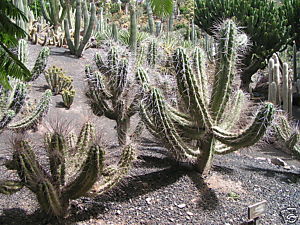
Stesonia Coryne is known as toothpick cactus, for its long, thick spines, which can actually be used as toothpicks. This branching species is the only member of its genus, and forms large stands that can measure up to thirty feet in height. It is native to Northwestern Argentina and is hardy outdoors in Zones 9 through 11. It can reportedly withstand bouts of frost down to 18 degrees Fahrenheit. More often, it is grown as a potted plant that is moved indoors during the colder months. It is a night bloomer with pinkish white flowers. The rinds of the fruits are eaten raw while the entire fruit is eaten cooked. A moderately fast grower, coryne should be watered regularly throughout the summer for best growth.
Growing Information: https://www.worldseedsupply.com/germination-of-cacti-such-as-san-pedro-cactus-peruvian-torch-and-other-spiny-friends/
In purchasing, international buyers agree to assume the risk of arrival of all items. We cannot replace lost or seized items. You will be required to confirm that you agree to these terms before items can be sent.
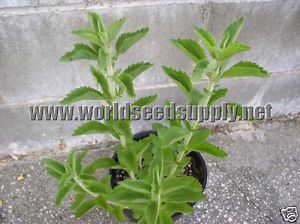
Stevia Rebaudiana is a member of the sunflower family from Central and South America. Growing to about 3 feet, it has been used there for centuries as a sweetener in things like Yerba Mate’ tea (available in our store). The leaf itself is about 25 times stronger than cane sugar, and extracts can be hundreds of times stronger. The taste of stevia, which is attributed to stevioside and rebaudioside, is not exactly the same and lasts longer. Stevia is also free of calories. Today, it is widely used in Japan, and has gained attention among diabetics and those who cannot take sugar. Stevia leves can be used fresh or dried. The plant itself is also said to repel aphids and many other garden pests. This product contains seeds mixed with chaff.
Growing Information: Seeds can be surface sown in pots indoors. Use a sandy, well-draining soil. Spray the surface of your soil to keep it moist. Then flatten it out without applying much pressure. Sow the seeds on the surface, and cover with clear plastic to seal in moisture. Keep the soil temperature about 65 degrees Fahrenheit. Set your plants at a final spacing of about 1.5 feet apart in full sun. Plants will do best if grown in raised beds. Keep constantly moist without overwatering. Stevia is a frost-sensitive perennial. If left outdoors, mulching will help insulate the plant during the colder months.
In purchasing, international buyers agree to assume the risk of arrival of all items. We cannot replace lost or seized items. You will be required to confirm that you agree to these terms before items can be sent.
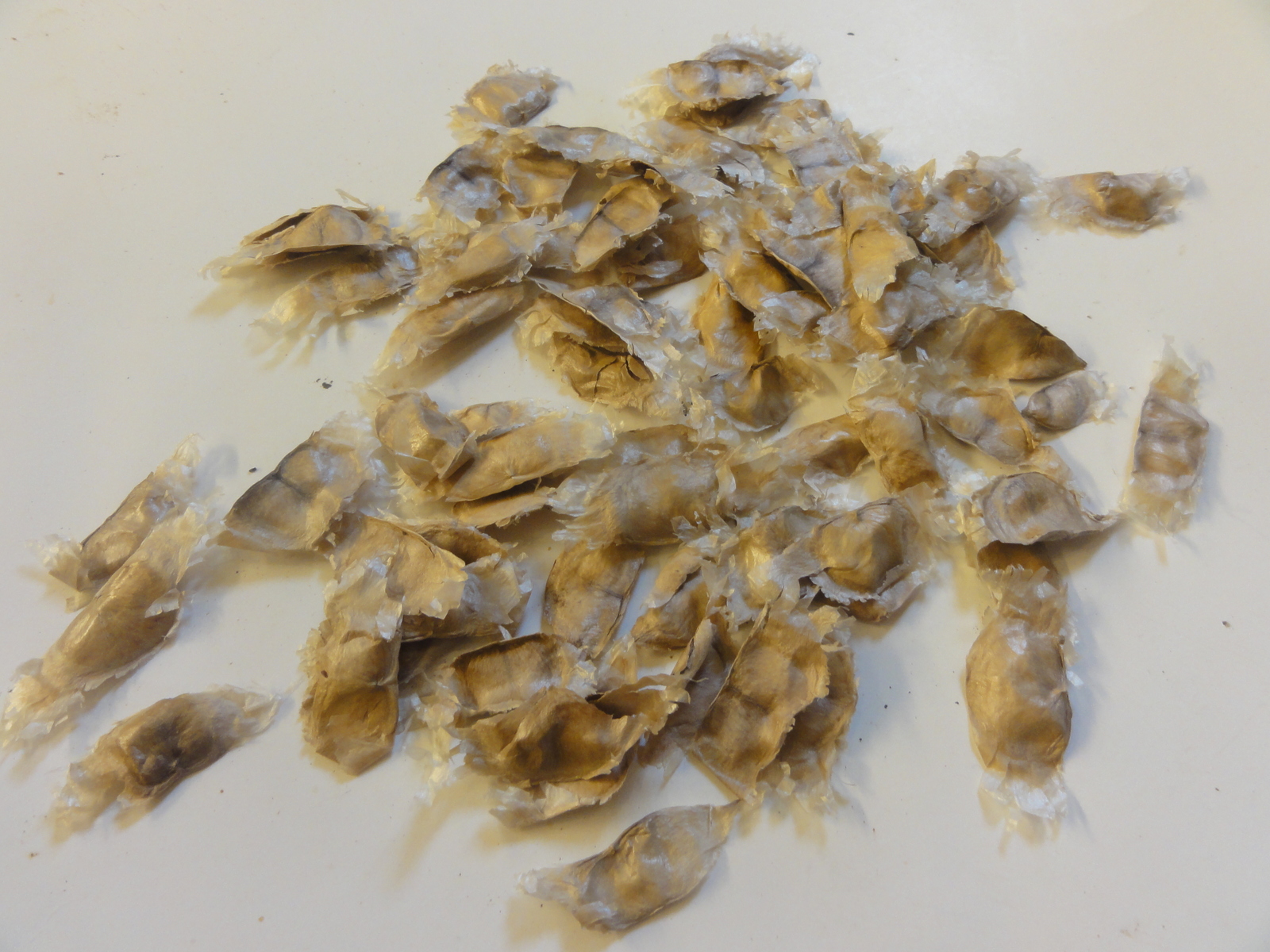
Pau d’ Arco is the common name for the bark derived from several different types of Tabebuia trees, which are large trees featuring colorful trumpet flowers that are indigenous to the Amazon and tropical areas in South and Latin America. The Pau d’ Arco bark has long been used for medicinal purposes by natives of South America, along with the ancient Inca and Aztec civilizations. The herb is retrieved from the inner bark of the tree and can be taken in tincture form, or dried and subsequently steeped in boiling water to create a somewhat bitter tasting tea. It is typically used to treat viral infections, parasites, colds and coughs. It is also effective in treating more serious issues such as gastro-intestinal problems, urinary tract infections and is beneficial to those fighting cancer. This plant does well in pots.
Growing Information: Remove the seeds from the papery covering prio to sowing. Use a quick-draining soil. Lay the seed flat and cover with 1/4″ of soil, then press down lightly. The seeds must be keep moist and consistenly warm. This plant prefers full sun to partial shade.
In purchasing, international buyers agree to assume the risk of arrival of all items. We cannot replace lost or seized items. You will be required to confirm that you agree to these terms before items can be sent.
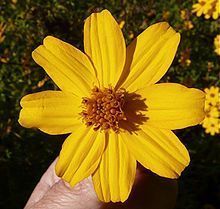
Tagetes Lucida is a special member of the marigold family valued for medicinal and culinary uses. It is known by a number of names such as Mexican Mint Marigold or Mexican Tarragon (for its use as a tarragon substitute in cooking). It is also known as Spanish Tarragon, which is held in contrast to French Tarragon. This spice, which is native to Mexico and Central America, has a mild licorice flavor. The flavor is not as pronounced as anise and goes well in soups. It was reportedly used as a flavoring to mask the bitterness of raw cocoa in the Aztec foaming drink called, “Cocolatl.” Tagetes Lucida is a half-hardy perennial, which can be grown outdoors all year round to about zone 8. Elsewhere, it should be treated as an annual. Fresh material can be harvested throughout the growing season. It can be used fresh or dried, although fresh material is more potent. As a medicinal, this plant is used as a sedative and a stomach settler. It is most commonly taken as a tea. Tagetes Lucida depresses the central nervous system and is reported to have mild hallucinogenic activity at high doses. It has even been used to make incense.
Growing Information: Tagetes lucida likes a fertile, well-drained soil. Starting indoors is best to get a good start on the growing season. Sow seeds at a depth of 1/8” about 6-8 weeks before the last frost. They can also be sown outdoors after the last frost at a depth of 1/8”. Place your plants in full sun for best results, although partial shade is tolerable. Plants should be spaced about 12”-18” apart. Cut your plants back regularly to promote the formation of branches, especially early on. Removing the spent flower heads will promote flowering as well.
In purchasing, international buyers agree to assume the risk of arrival of all items. We cannot replace lost or seized items. You will be required to confirm that you agree to these terms before items can be sent.

Tanacetum Cinerariifolium, more commonly known as Pyrethrum, has numerous small white daisy-like flowers and is related to both feverfew and tansy. Like these other two flowers, pyrethrum has insecticidal properties. However, while feverfew and tansy are limited more to companion planting to ward unwanted insects away from other plants, pyrethrum is actually strong enough to be used commercially as a natural pesticide spray. The insecticidal properties are due to the chemical pyrethrin, which is found primarily in the flowers of the plant. The spray can be made from just a tablespoon of the dried flower heads added to two quarts of warm water and a dash of soap. It works best in cool temperatures. Burning the flowers can also help ward off mosquitoes, and they were traditionally used as a remedy for lice. Pyrethrin is particularly important because it is considered one of the safest insecticides on the market. Even though it is natural, pyrethrin is still powerful enough to be harmful to fish and individuals with an allergy to the chemical. But it is praises for not leaving any residues once it breaks down. Pyrethrum is native to the Balkans. These perennial plants can grow to over two feet in height and are optimal for zones 4-9. They enjoy full sun and a well-draining sandy loam.
Growing Information: Sow your seeds on the surface of the soil. A well-draining sandy loam is preferred. Optimal germination temperature is roughly 75 degrees Fahernheit. Seeds are probably best off being sown in the fall or early spring directly outdoors, sprouting as weather conditions become appropriate. Otherwise, you can start seeds indoors 6-8 weeks before the last frost, but you will have to harden them off before moving them outdoors. Choose a final position in full sun with a spacing of about 1.5-2 feet apart.
In purchasing, international buyers agree to assume the risk of arrival of all items. We cannot replace lost or seized items. You will be required to confirm that you agree to these terms before items can be sent.
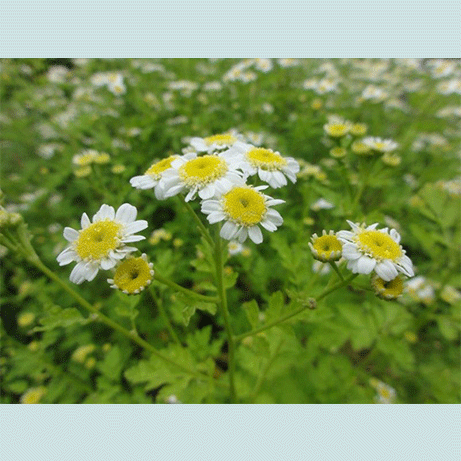
Feverfew is a daisy-like member of the sunflower family that is native to southeast Europe. This short perennial flowers from July through October and is essentially maintenance-free. This seemingly ordinary plant is actually valued for a multitude of medicinal uses. The primary active constituent in the plant is called parthenolide, which is resides most plentifully in the flowers and fruit. Parthenolide prevents constriction, which makes feverfew a popular herbal remedy for migraine headaches. In addition to preventing constriction, feverfew is an anti-inflammatory, making it a popular treatment for arthritis and general pain relief. In addition to these, feverfew reportedly relieves muscle spasms due to a mild sedative action. It also has a positive effect on the stomach and can be used for menstrual problems, asthma relief and irritated skin. It is even believed to have potential as an anti-cancer drug because it kills leukemia cells.
Growing information: The seeds should be sown outdoors in early spring. It can be grown in ordinary soil, but it will thrive in a rich, dry, well-drained loam. They can be spread directly on top of the soil or mixed with sand before broadcasting in the same manner. Keep the soil evenly moist until germination occurs. Seedlings can also be started indoors and transplanted if care is taken not to damage the roots. Seeds sown indoors should be cold stratified in the fridge for 10 days or more prior to planting. Plants should be given full sun to partial shade. Feverfew reseeds easily.
In purchasing, international buyers agree to assume the risk of arrival of all items. We cannot replace lost or seized items. You will be required to confirm that you agree to these terms before items can be sent.
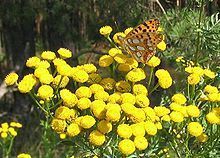
Chrysanthemum vulgare is synonymous of Tanacetum vulgare aka Tansy. It is a hardy perennial herb that grows to about 4 ft. / 1.2m, with pinnate leaves and a camphor scent. There are a number of chemotypes, with scent of rosemary, artemisia, or eucalyptus. These essences make it a useful insecticide, and many growers plant tansy in their gardens to help control pests. Tansy is an ornamental herb with golden button flowers. It is a bitter plant that is also included in liqueurs. In Medieval times, it was eaten in dishes as a penance at Easter rites. The name derives from the Greek word athanasia , meaning “immortality,” reflecting the fact that Tansy can stay in bloom for a long period. In ancient Greece, corpses were packed with leaves to preserve the body and word off insect until burial took place. The plant also produces a yellow dye.
Herbal Information
Chrysanthemum vulgare aerial parts, like those of wormwood, were once used for treatment of worm infestation of the gut. Today this herb is less used for medicinal purposes because it, also like wormwood, contains “thujone” which is associated with toxic effects. It can have negative side effects on the uterus; therefore, it can harm women who are pregnant or trying to become pregnant. It was traditionally used as a bath to help alleviate joint pain.
Growing information: Chrysanthemum vulgare should grow in a well-drained soil that is mildly acidic and mildly alkaline, in full to partial sun. It is propagated by planting the seeds in the spring or by semi-ripe tip cuttings during the summer. Seeds should be surface sown on moist soil. Take measures to keep the seed from blowing away. Tansy can grow very invasively so in garden beds the rhizomes should be kept under control. Tansy has average water requirements.. Water regularly; but do not overwater. Tansy is a natural insect repellant and can be grown in pots to be kept outside around entertainment areas. Indoors, dry tansy can be used to deter ants, moths or fleas. Tansy should be planted with potato crops to deter the highly destructive Colorado beetle. Harvesting should be done during flowering.
In purchasing, international buyers agree to assume the risk of arrival of all items. We cannot replace lost or seized items. You will be required to confirm that you agree to these terms before items can be sent.

Dandelion is a yellow button-flowered member of the endive family. The mineral-rich leaves of this plant are commonly eaten as a gourmet salad green and have various other culinary uses as well. In addition to minerals, the leaves are potent sources of vitamins A, C, H and antioxidants. The flowers are used in traditional medicine to detoxify the liver and reduce inflammation. They also have diuretic properties that can help clean the kidneys. Some sources list dandelions as having anti-tumor properties. The stems and roots exude a sticky, white sap, which has been a traditional remedy for warts. Dandelion petals are also used to make dandelion wine, and the roots have been brewed into a coffee-like drink.
Growing Information: Dandelion is easily grown in a fertile, well-draining soil. It will tolerate most climates. A deep, loose soil will allow for the biggest roots. Full sun is recommended but not essential. Sow the seeds on the surface of moist soil. It may be easiest to start indoors or in covered containers to keep the seeds from blowing or washing away. Plants can be spaced about every 7?. Little care is required other than supplying good moisture. Dehydrated plants tend to be bitter. Harvest the leaves when young, especially the inner leaves.
In purchasing, international buyers agree to assume the risk of arrival of all items. We cannot replace lost or seized items. You will be required to confirm that you agree to these terms before items can be sent.
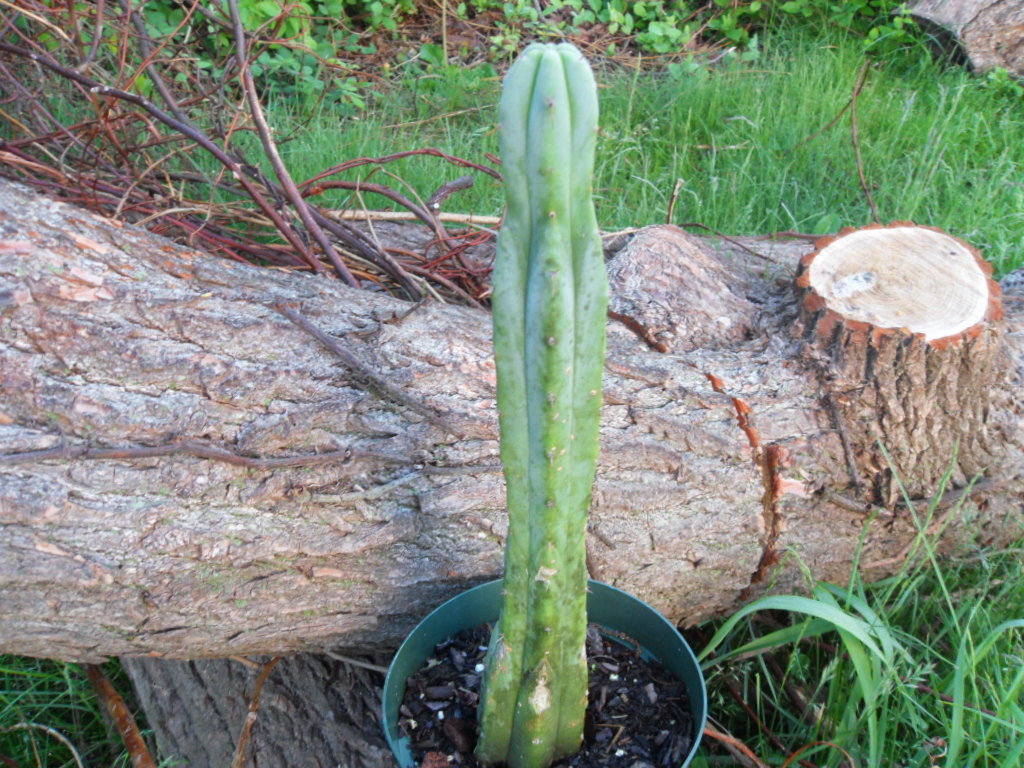
Trichocereus bridgesii, also classified as Echinopsis lageniformis, is a bluish-green columnar cactus native to Boliva, which is also where these seeds are from. It resembles the more common San Pedro cactus (trichocereus pachanoi) but typically has fewer, wider ribs and longer spines. In fact, many references to San Pedro in Bolivia are believed to actually be referring to bridgesii rather than pachanoi. This cactus has gained much popularity among cactus collectors in recent years. Like pachanoi, it has huge, white blooms that make it an attractive landscaping cactus. It grows a little bit slower than pachanoi but is still a rapid grower, making it one of several trichocereus species that work well as a grafting stock for slower-growing cacti such as astrophytum and ariocarpus. It can reach fifteen feet in height and tends to produce offsets rather easily. Trichocereus bridgesii is also easy to grow from seed, but its seedlings are more prone to turning purple than many other trichocereus species when exposed to sunlight. When this occurs, be sure to reduce their exposure. It is hardy to about 30 degrees Fahrenheit and should only be watered during active growth when the soil has dried out. During the winter in areas where temperatures are too cold, plants should be brought inside where they will go dormant (stop growing). Prior to entering dormancy (late September-early October), watering should be slowly reduced until it reaches none. Plants should be brought indoors and stored in a cool, dry, dark place. Since it is not growing, it does not require any of these essentials. When breaking dormancy, a reverse process can be applied. This will ensure nice, even growth to your cacti and reduce the chance of infection due to overwatering when the cactus’s immune system is at rest.
Growing Information: https://www.worldseedsupply.com/germination-of-cacti-such-as-san-pedro-cactus-peruvian-torch-and-other-spiny-friends/
In purchasing, international buyers agree to assume the risk of arrival of all items. We cannot replace lost or seized items. You will be required to confirm that you agree to these terms before items can be sent.
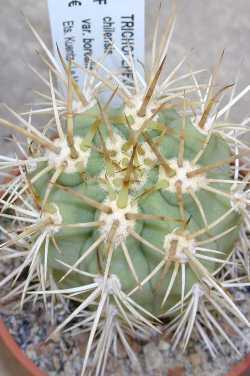
Trichocereus Chilensis is an ornamental columnar cactus from, as the name indicates, Chile. It was originally spelled “Chiloensis,” although it was later pointed out that this spelling was technically incorrect if the cactus was to be named after Chile. At that point, Chilensis was adopted, but there have been controversies over whether the original named should still be used. Chilensis is capable of forming large treelike plants up to 25 feet in height and 5 inches in thickness. It has yellow spines that turn grey with age. In its youth it closely resembles the kk242 variety of T. peruvianus, although it typically has 10-17 notched ribs. This species is also valued for large, white nocturnal blooms that can extend as much as six inches. This species does well in the ground or in medium-sized pots in locations where it has to be moved indoors for the winter. In zones 10-12 it can be left outdoors all year round. It handles full sun well and is drought tolerant once established. Waterings should be deep and infrequent. During the dormant period plants should be kept cool and completely dry.
Growing Information: https://www.worldseedsupply.com/germination-of-cacti-such-as-san-pedro-cactus-peruvian-torch-and-other-spiny-friends/
In purchasing, international buyers agree to assume the risk of arrival of all items. We cannot replace lost or seized items. You will be required to confirm that you agree to these terms before items can be sent.

Trichocereus Glaucus is native to south east Bolivia and Peru. This species is perhaps most well-known for its blue skin, which becomes gray with age. Its spines are black to grey. It is frequently mixed up with trichocereus peruvianus and macrogonus. Some consider it a variety of trichocereus uyupampensis. Its flowers are pinkish white.
Growing Information: https://www.worldseedsupply.com/germination-of-cacti-such-as-san-pedro-cactus-peruvian-torch-and-other-spiny-friends/
In purchasing, international buyers agree to assume the risk of arrival of all items. We cannot replace lost or seized items. You will be required to confirm that you agree to these terms before items can be sent.
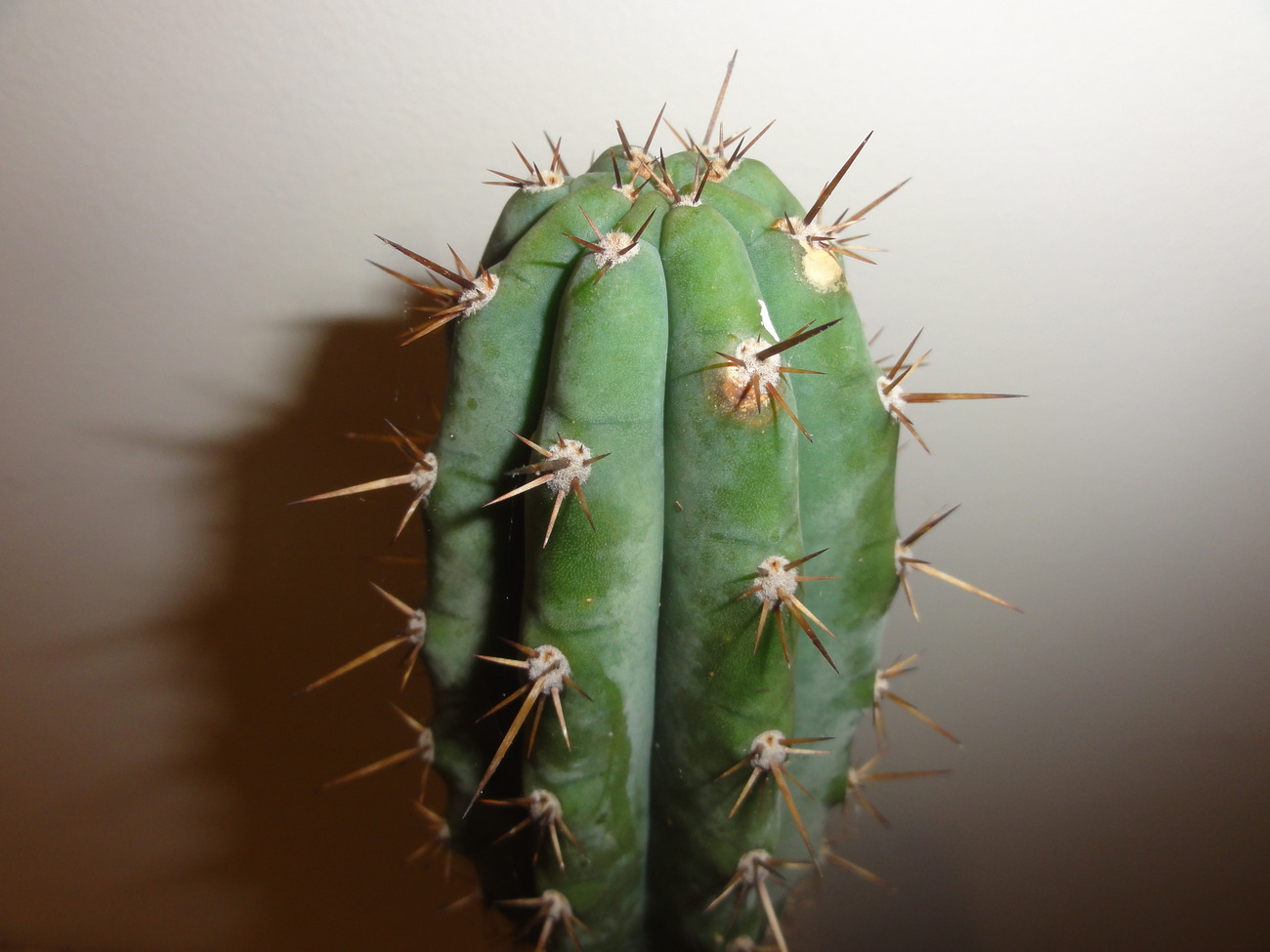
This trichocereus species is most closely related to trichocereus peruvianus, although seeds and specimens are less readily available. Also a relative of trichocereus bridgesii and trichocereus pachanoi, macrogonus grows wild in Ecuador, Peru and Bolivia. It is characterized by its bluish-green skin, thick stems and multiple brown spines. Macrogonus is said to be the fastest-growing of all trichocereus species.
Growing Information: https://www.worldseedsupply.com/germination-of-cacti-such-as-san-pedro-cactus-peruvian-torch-and-other-spiny-friends/
In purchasing, international buyers agree to assume the risk of arrival of all items. We cannot replace lost or seized items. You will be required to confirm that you agree to these terms before items can be sent.
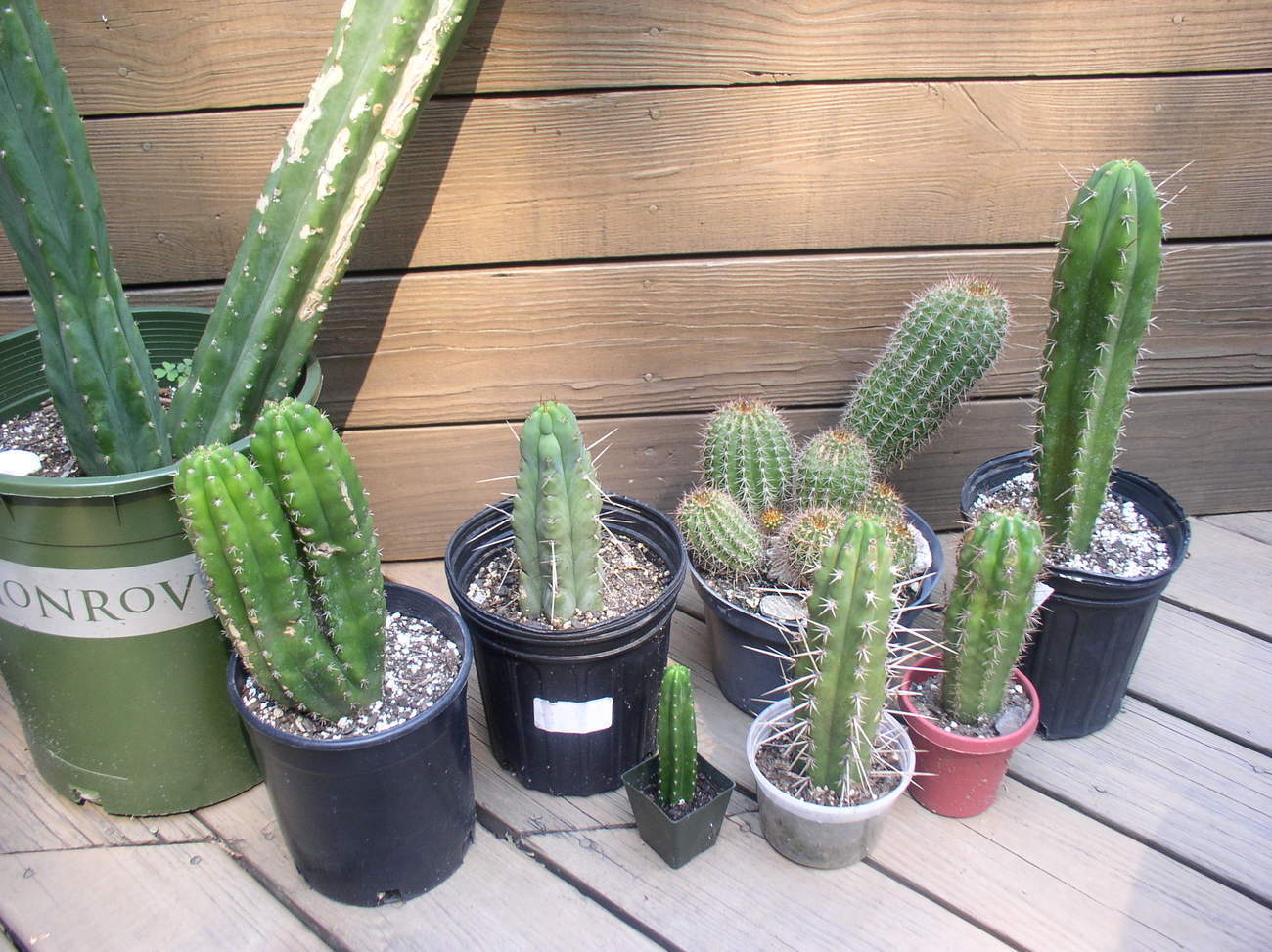
This pack contains an assortment of different trichocereus cacti seeds. We carry numerous different species and subspecies of trichocereus. This is an absolute grab-bag of trichocereus genetics. The mix is always changing. It can include both common and uncommon species.
Growing Information: https://www.worldseedsupply.com/germination-of-cacti-such-as-san-pedro-cactus-peruvian-torch-and-other-spiny-friends/
In purchasing, international buyers agree to assume the risk of arrival of all items. We cannot replace lost or seized items. You will be required to confirm that you agree to these terms before items can be sent.
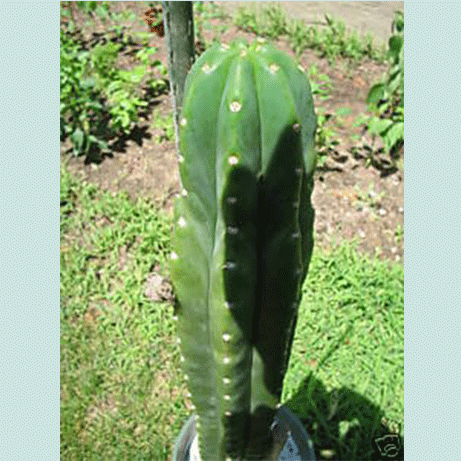
Trichocereus Pachanoi is perhaps the most famous of the trichocereus species. This easy-to-grow, ornamental, columnar cactus is popular for a variety of reasons. San Pedro cactus is a sacred symbol among the various peoples of its native habitat, which stretches from the Andes of Peru to Bolivia to Ecuador. A common landscaping cactus, trichocereus pachanoi is also tolerant of a wide variety of conditions and can handle more water and fertilization than most cacti, making it a good cactus species for beginners. Trichocereus pachanoi’s small spines also make San Pedro Cactus easier to handle for those who are not experienced with dealing with sharp spines or those who have curious kids or pets that may be injured by larger spines. Additionally, San Pedro cactus is a rapid grower, making it a favorite grafting stock for speeding up the progress of slower-growing cacti such as astrophytum and ariocarpus. Under ideal conditions, San Pedr cactus can grow up to 18 inches per year and will readily shoot off new pups (branches). Frost hardy to about 26 degrees Fahrenheit, San Pedo cacti can be raised outdoors all year in Zone 9 or warmer. Otherwise, it should be kept in medium to large pots that can be moved inside during the winter months. Trichocereus pachanoi can be watered frequently during the summer months, sometimes as often as every two days if the top inch or two of the soil is dry. During the winter, your San Pedro cactus should be slowly acclimated to cool, dry, dark conditions to avoid stretching that could damage the aesthetics and structural integrity of the plant. When breaking dormancy in the spring, a reverse process of slowly introducing the factors necessary for growth may be beneficial for the same reason. For optimal skin color, trichocereus pachanoi should be kept in partial rather than full sun and the soil should be well-draining and rich in organic nutrients and minerals. Pachanoi blooms are large, white and have a strong, pleasant perfume.
Trichocereus pachanoi grown from seeds typically have larger spines than the so-caled PC (predomiant cultivar) clone of trichocereus pachanoi. The PC clone is usually reproduced by cuttings, so it maintains it’s small spine feature. The PC pachanoi has been in cultivation in this country for many decades and has become easy to recognize, but it is not how trichocereus pachanoi appears in nature. Wild trichocereus pachanoi typically resemble more of what people expect of trichocereus peruvianus. The spines tend to be brown and longer. There is also more variety as cross pollination increases the gene pool. So when growing trichocereus pachanoi from seed, these types of variations are to be expected.
Growing Information: <a href=” https://www.worldseedsupply.com/germination-of-cacti-such-as-san-pedro-cactus-peruvian-torch-and-other-spiny-friends/”>https://www.worldseedsupply.com/germination-of-cacti-such-as-san-pedro-cactus-peruvian-torch-and-other-spiny-friends/
In purchasing, international buyers agree to assume the risk of arrival of all items. We cannot replace lost or seized items. You will be required to confirm that you agree to these terms before items can be sent.
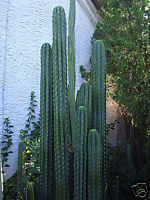
Trichocereus Peruvianus is one of the most revered trichocereus species. This easy-to-grow, ornamental, columnar cactus is often recognized with San Pedro because it is also a sacred symbol with a long history of sacramental use amongst the various peoples of South America. It is somewhat less common in landscaping than pachanoi but is still tolerant of a wide variety of conditions and can handle more water and fertilization than most cacti, making it a good species for beginners. Its rapid growth rate rivals that of pachanoi (up to18 inches per year), and it can reach up to 18 feet with maturity. It is sometimes used as a grafting stock, although its large spines, which can easily measure three to four inches, make it more difficult to work with than San Pedro or Blue Myrtle. Like pachanoi, peruvianus is frost hardy to about 26 degrees Fahrenheit and can be raised outdoors all year in Zone 9 or warmer. Otherwise, it should be kept in medium to large pots that can be moved inside during the winter months. Plants can be watered frequently during the summer months. During the winter, they should be slowly acclimated to cool, dry, dark conditions to avoid stretching that could damage the aesthetics and structural integrity of the plant. When breaking dormancy in the spring, a reverse process of slowly introducing the factors necessary for growth may be beneficial for the same reason. For optimal skin color, T. Peruvianus should be kept in partial to full sun and the soil should be well-draining and rich in organic nutrients and minerals. Its blooms are also large and white.
These seeds were collected at the Waullac archeological complex, which dates back to pre-Inca times and is located near the modern city of Huaraz.
Growing Information: https://www.worldseedsupply.com/germination-of-cacti-such-as-san-pedro-cactus-peruvian-torch-and-other-spiny-friends/
In purchasing, international buyers agree to assume the risk of arrival of all items. We cannot replace lost or seized items. You will be required to confirm that you agree to these terms before items can be sent.
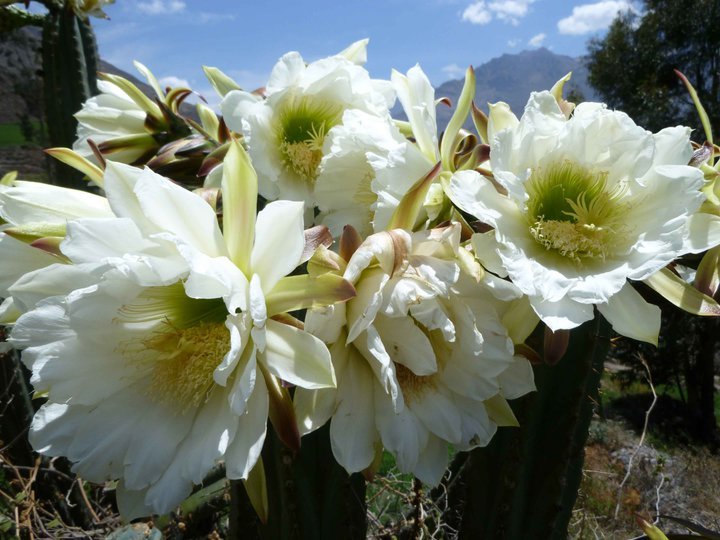
Trichocereus Peruvianus is one of the most revered trichocereus species. This easy-to-grow, ornamental, columnar cactus, like other species of trichocereus, is tolerant of a wide variety of conditions and can handle more water and fertilization than most cacti. This makes it a good species for beginners. Its rapid growth rate rivals that of pachanoi (up to18 inches per year), and it can reach up to 18 feet with maturity. It is sometimes used as a grafting stock, although its large spines, which can easily measure three to four inches, make it more difficult to work with than San Pedro or Blue Myrtle. Like pachanoi, peruvianus is frost hardy to about 26 degrees Fahrenheit and can be raised outdoors all year in Zone 9 or warmer. Otherwise, it should be kept in medium to large pots that can be moved inside during the winter months. Plants can be watered frequently during the summer months. During the winter, they should be slowly acclimated to cool, dry, dark conditions to avoid stretching that could damage the aesthetics and structural integrity of the plant. When breaking dormancy in the spring, a reverse process of slowly introducing the factors necessary for growth may be beneficial for the same reason. For optimal skin color, trichocereus peruvianus should be kept in partial to full sun and the soil should be well-draining and rich in organic nutrients and minerals. Its blooms are also large and white. We carry several varieties of Peruvian Torch. This variety of trichocereus peruvianus was collected in Ancash, which is located in northern Peru.
Growing Information: https://www.worldseedsupply.com/germination-of-cacti-such-as-san-pedro-cactus-peruvian-torch-and-other-spiny-friends/
In purchasing, international buyers agree to assume the risk of arrival of all items. We cannot replace lost or seized items. You will be required to confirm that you agree to these terms before items can be sent.
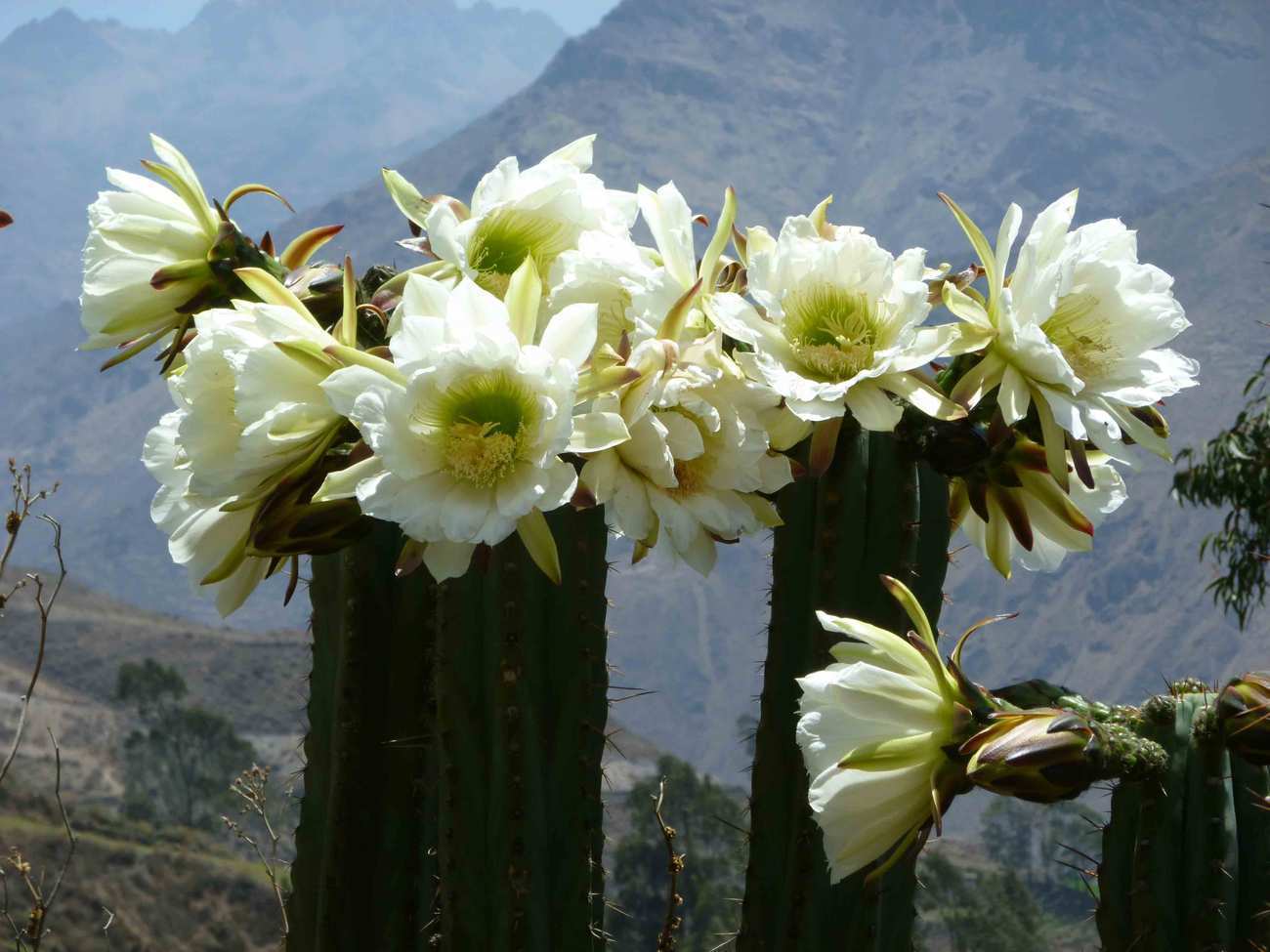
We carry several varieties of Peruvian Torch. This variety of Trichocereus Peruvianus was collected in the elusive Huancabamba region, which is perched high up in the scenic mountains of the northwestern area of the country. Huamcabamba is a center for brujeria or witchcraft and healing and is home to legendary shamans (curanderos) whose natural medicine and spiritual beliefs are part of an ancient tradition. Still today these healers play a central role in the medicine that takes place there, an area primarily unadulterated by modern practices. And in fact, travelers from afar still make journeys to seek the help of these shamans in matters of health and love. Trichocereus Peruvianus is one of the most revered trichocereus species. This easy-to-grow, ornamental, columnar cactus, like other species of trichocereus, is tolerant of a wide variety of conditions and can handle more water and fertilization than most cacti. This makes it a good species for beginners. Its rapid growth rate rivals that of pachanoi (up to18 inches per year), and it can reach up to 18 feet with maturity. It is sometimes used as a grafting stock, although its large spines, which can easily measure three to four inches, make it more difficult to work with than San Pedro or Blue Myrtle. Like pachanoi, peruvianus is frost hardy to about 26 degrees Fahrenheit and can be raised outdoors all year in Zone 9 or warmer. Otherwise, it should be kept in medium to large pots that can be moved inside during the winter months. Plants can be watered frequently during the summer months. During the winter, they should be slowly acclimated to cool, dry, dark conditions to avoid stretching that could damage the aesthetics and structural integrity of the plant. When breaking dormancy in the spring, a reverse process of slowly introducing the factors necessary for growth may be beneficial for the same reason. For optimal skin color, trichocereus peruvianus should be kept in partial to full sun and the soil should be well-draining and rich in organic nutrients and minerals. Its blooms are also large and white.
Growing Information: https://www.worldseedsupply.com/germination-of-cacti-such-as-san-pedro-cactus-peruvian-torch-and-other-spiny-friends/
In purchasing, international buyers agree to assume the risk of arrival of all items. We cannot replace lost or seized items. You will be required to confirm that you agree to these terms before items can be sent.
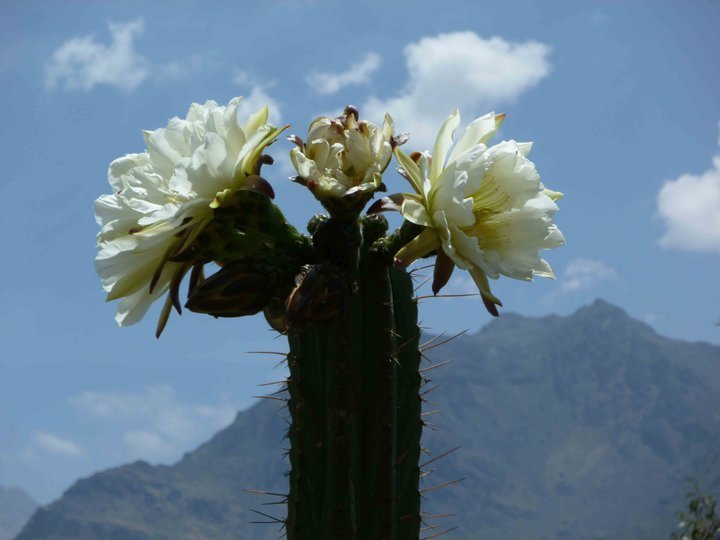
Trichocereus peruvianus is one of the most revered trichocereus species. This easy-to-grow, ornamental, columnar cactus, like other species of trichocereus, is tolerant of a wide variety of conditions and can handle more water and fertilization than most cacti. This makes it a good species for beginners. Its rapid growth rate rivals that of pachanoi (up to18 inches per year), and it can reach up to 18 feet with maturity. It is sometimes used as a grafting stock, although its large spines, which can easily measure three to four inches, make it more difficult to work with than San Pedro or Blue Myrtle. Like pachanoi, peruvianus is frost hardy to about 26 degrees Fahrenheit and can be raised outdoors all year in Zone 9 or warmer. Otherwise, it should be kept in medium to large pots that can be moved inside during the winter months. Plants can be watered frequently during the summer months. During the winter, they should be slowly acclimated to cool, dry, dark conditions to avoid stretching that could damage the aesthetics and structural integrity of the plant. When breaking dormancy in the spring, a reverse process of slowly introducing the factors necessary for growth may be beneficial for the same reason. For optimal skin color, trichocereus peruvianus should be kept in partial to full sun and the soil should be well-draining and rich in organic nutrients and minerals. Its blooms are also large and white. We carry several varieties of Peruvian Torch. This variety of trichocereus peruvianus was collected in San Marcos, which is located in the Cajamarca region of northern Peru, near thew Ecuadorian border.
Growing Information: https://www.worldseedsupply.com/germination-of-cacti-such-as-san-pedro-cactus-peruvian-torch-and-other-spiny-friends/
In purchasing, international buyers agree to assume the risk of arrival of all items. We cannot replace lost or seized items. You will be required to confirm that you agree to these terms before items can be sent.
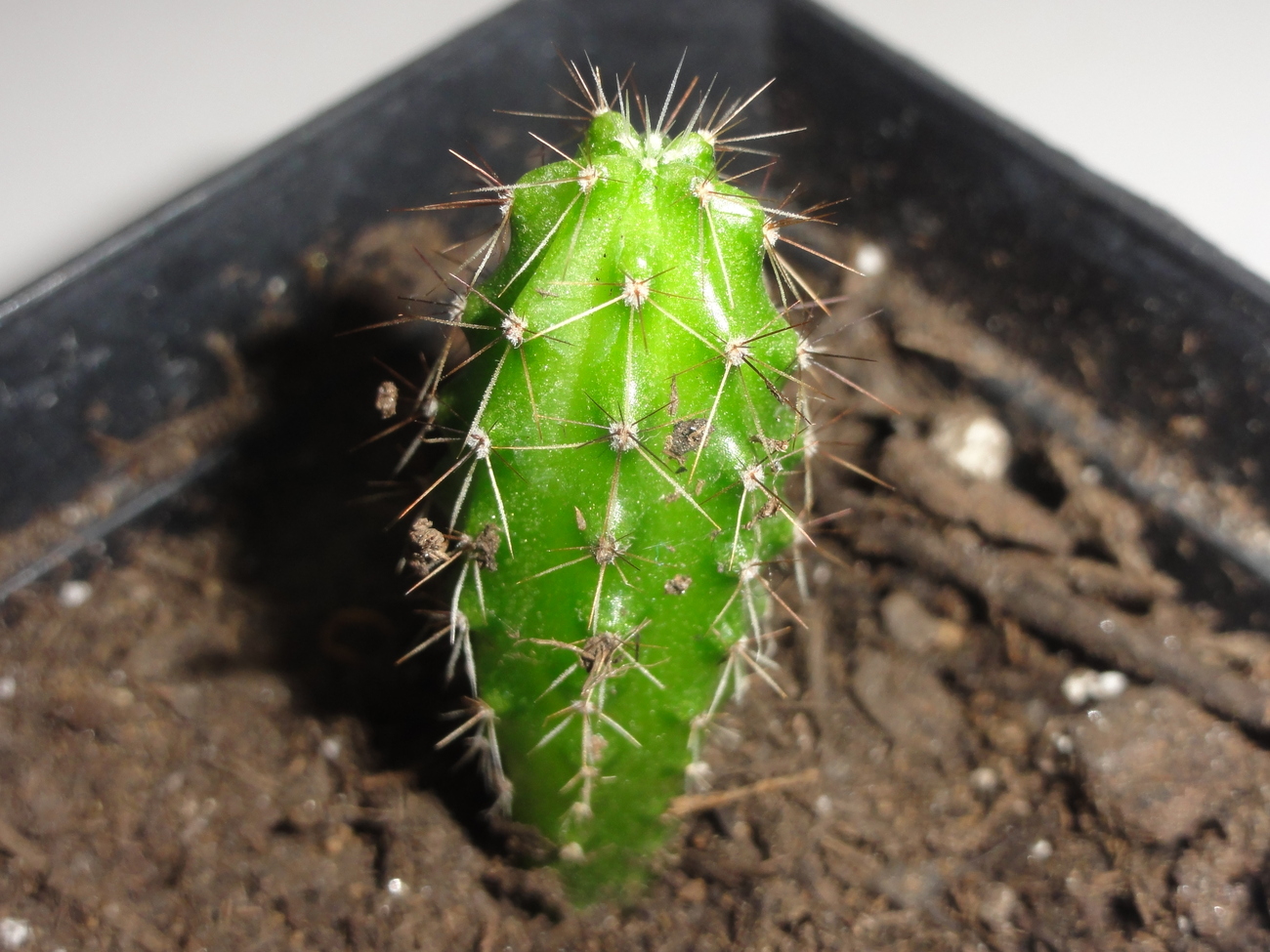
Trichocereus peruvianus is one of the most revered trichocereus species. This easy-to-grow, ornamental, columnar cactus, like other species of trichocereus, is tolerant of a wide variety of conditions and can handle more water and fertilization than most cacti. This makes it a good species for beginners. Its rapid growth rate rivals that of pachanoi (up to18 inches per year), and it can reach up to 18 feet with maturity. It is sometimes used as a grafting stock, although its large spines, which can easily measure three to four inches, make it more difficult to work with than San Pedro or Blue Myrtle. Like pachanoi, peruvianus is frost hardy to about 26 degrees Fahrenheit and can be raised outdoors all year in Zone 9 or warmer. Otherwise, it should be kept in medium to large pots that can be moved inside during the winter months. Plants can be watered frequently during the summer months. During the winter, they should be slowly acclimated to cool, dry, dark conditions to avoid stretching that could damage the aesthetics and structural integrity of the plant. When breaking dormancy in the spring, a reverse process of slowly introducing the factors necessary for growth may be beneficial for the same reason. For optimal skin color, trichocereus peruvianus should be kept in partial to full sun and the soil should be well-draining and rich in organic nutrients and minerals. Its blooms are also large and white. These seeds are collected in Matucana, Peru. They are known for a rich green stem with brown spines. This is our most popular form of Peruvianus.
Growing Information: https://www.worldseedsupply.com/germination-of-cacti-such-as-san-pedro-cactus-peruvian-torch-and-other-spiny-friends/
In purchasing, international buyers agree to assume the risk of arrival of all items. We cannot replace lost or seized items. You will be required to confirm that you agree to these terms before items can be sent.
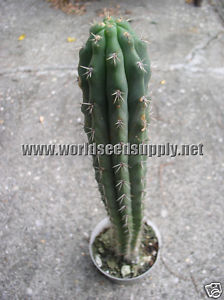
Trichocereus peruvianus is one of the most revered trichocereus species. This easy-to-grow, ornamental, columnar cactus is often recognized with San Pedro because it is also a sacred symbol with a long history of sacramental use amongst the various peoples of South America. It is somewhat less common in landscaping than pachanoi but is still tolerant of a wide variety of conditions and can handle more water and fertilization than most cacti, making it a good species for beginners. Its rapid growth rate rivals that of pachanoi (up to18 inches per year), and it can reach up to 18 feet with maturity. It is sometimes used as a grafting stock, although its large spines, which can easily measure three to four inches, make it more difficult to work with than San Pedro or Blue Myrtle. Like pachanoi, peruvianus is frost hardy to about 26 degrees Fahrenheit and can be raised outdoors all year in Zone 9 or warmer. Otherwise, it should be kept in medium to large pots that can be moved inside during the winter months. Plants can be watered frequently during the summer months. During the winter, they should be slowly acclimated to cool, dry, dark conditions to avoid stretching that could damage the aesthetics and structural integrity of the plant. When breaking dormancy in the spring, a reverse process of slowly introducing the factors necessary for growth may be beneficial for the same reason. For optimal skin color, trichocereus peruvianus should be kept in partial to full sun and the soil should be well-draining and rich in organic nutrients and minerals. Its blooms are also large and white. THESE SEEDS ARE FROM THE APURIMAC REGION OF SOUTHWESTERN PERU. THE NAME FOR THIS MOUNTAINOUS REGION MEANS “WHERE THE GODS SPEAK.”
Growing Information: https://www.worldseedsupply.com/germination-of-cacti-such-as-san-pedro-cactus-peruvian-torch-and-other-spiny-friends/
In purchasing, international buyers agree to assume the risk of arrival of all items. We cannot replace lost or seized items. You will be required to confirm that you agree to these terms before items can be sent.
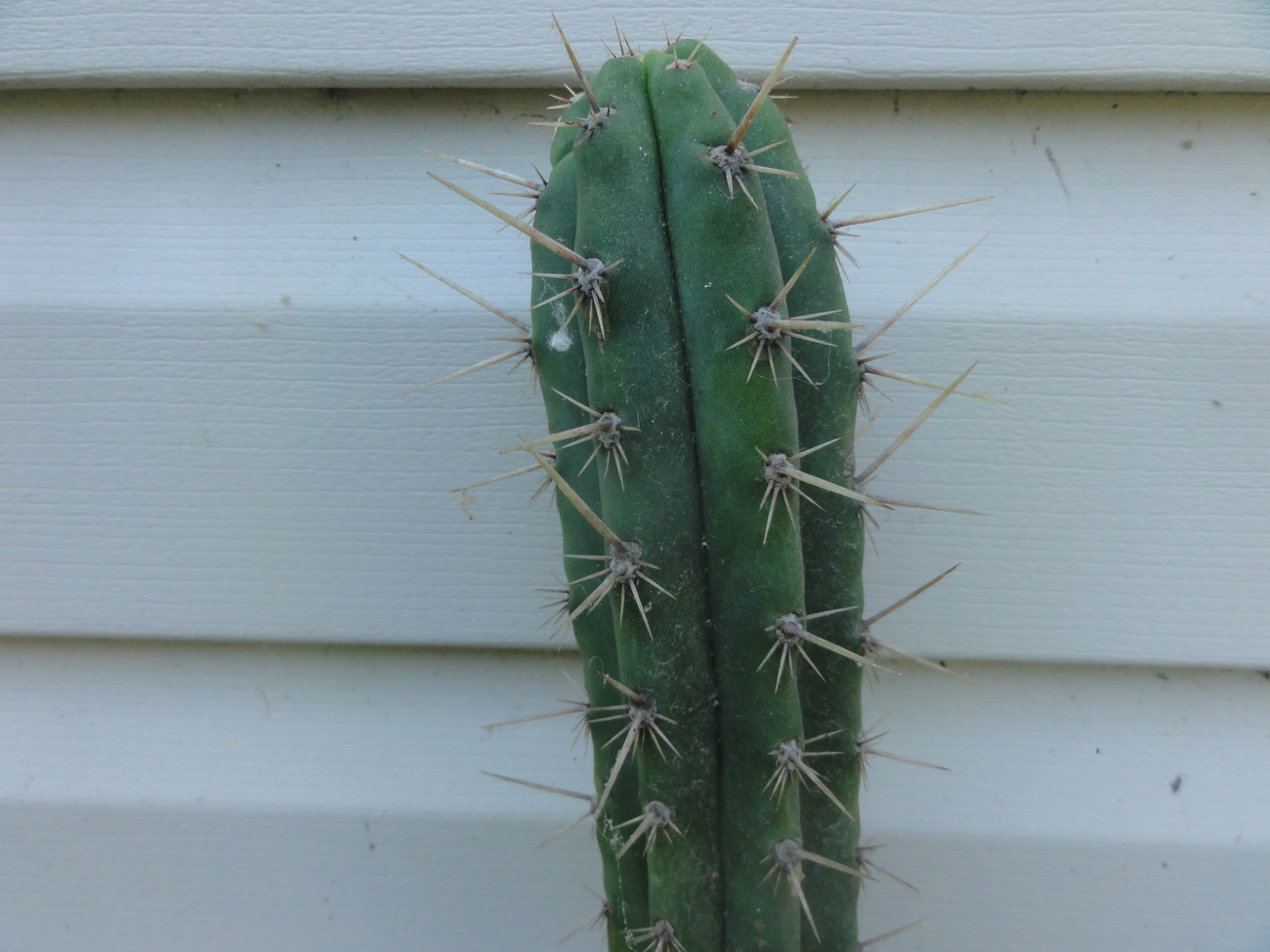
Trichocereus peruvianus is one of the most revered trichocereus species. This easy-to-grow, ornamental, columnar cactus, like other species of trichocereus, is tolerant of a wide variety of conditions and can handle more water and fertilization than most cacti. This makes it a good species for beginners. Its rapid growth rate rivals that of pachanoi (up to18 inches per year), and it can reach up to 18 feet with maturity. It is sometimes used as a grafting stock, although its large spines, which can easily measure three to four inches, make it more difficult to work with than San Pedro or Blue Myrtle. Like pachanoi, peruvianus is frost hardy to about 26 degrees Fahrenheit and can be raised outdoors all year in Zone 9 or warmer. Otherwise, it should be kept in medium to large pots that can be moved inside during the winter months. Plants can be watered frequently during the summer months. During the winter, they should be slowly acclimated to cool, dry, dark conditions to avoid stretching that could damage the aesthetics and structural integrity of the plant. When breaking dormancy in the spring, a reverse process of slowly introducing the factors necessary for growth may be beneficial for the same reason. For optimal skin color, trichocereus peruvianus should be kept in partial to full sun and the soil should be well-draining and rich in organic nutrients and minerals. Its blooms are also large and white. THESE SEEDS WERE COLLECTED NEAR THE ANCIENT PRE-INCAN CEREMONIAL SITE OF CHAVIN DE HUANTAR. THIS IS LOCATED IN THE ANCASH REGION.
Growing Information: https://www.worldseedsupply.com/germination-of-cacti-such-as-san-pedro-cactus-peruvian-torch-and-other-spiny-friends/
In purchasing, international buyers agree to assume the risk of arrival of all items. We cannot replace lost or seized items. You will be required to confirm that you agree to these terms before items can be sent.
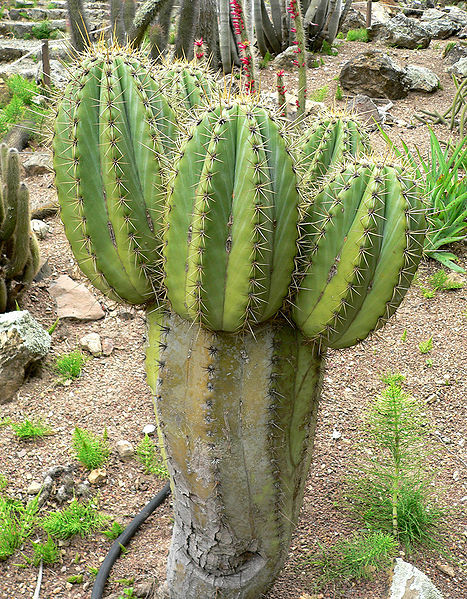
Trichocereus Terscheckii is the hardiest of the trichocereus species, being able to withstand temperatures as low as 15 degrees Fahrenheit. Trichocereus terscheckii is also one of the largest in the genus with mature specimens reaching between thirty and forty feet in height and ten inches in diameter. Its massive stature and mid-stem branching habit gives it a treelike appearance that much resembles America’s Giant Saguaro (carnegiea gigantea). However, this Argentina native grows much quicker and can tolerate more rainfall and colder temperatures, making it a popular landscaping substitute to the Giant Saguaro. Terscheckii’s spines are thick and golden and its blooms are large, white and nocturnal. Trichocereus terscheckii flowers can easily measure eight inches in length. There is also some suggestion that terscheckii may be part of a similar sacred tradition as certain other trichocereus varieties. All seed counts are approximated.
Growing Information: https://www.worldseedsupply.com/germination-of-cacti-such-as-san-pedro-cactus-peruvian-torch-and-other-spiny-friends/
In purchasing, international buyers agree to assume the risk of arrival of all items. We cannot replace lost or seized items. You will be required to confirm that you agree to these terms before items can be sent.
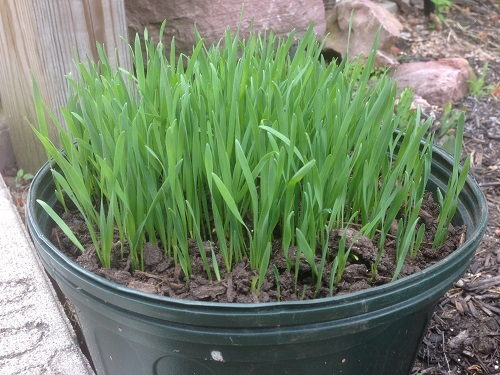
Everyone knows wheat is a popular cereal grain. But wheatgrass, specifically the young blades of grass that are only about a week old, can also be found at juice bars and health food stores. Wheatgrass is taken for a variety of health benefits and can be found in a number of forms including fresh grass, juiced grass, tablets and powdered grass. Wheatgrass is comparable to even the most nutritious vegetables, providing significant amounts of protein, B12, vitamin E, enzymes, amino acids and chlorophyll as well as a number of other vitamins and minerals. Most of the nutrients found in fresh wheatgrass are at least double than they are in whole wheat flour. Wheatgrass is believed to help detoxify the body, fight infection and improve digestion. Try it as a hangover cure. By acting as an appetite suppressant, wheatgrass can also promote weight loss. It has been associated with a lower risk of cancer and the reduction of tumors. Wheatgrass also promotes healthy skin and is a possible remedy for baldness and gray hair. Additionally, it also contributes to muscle building and increased endurance. Not only that, but wheatgrass may have a beneficial effect on circulation and blood sugar. Wheatgrass can be grown outdoors, but it is also commonly grown inside where is can be readily harvested and prepared. By growing your own, you can easily avoid the chemicals found in most produce. Wheatgrass is easy to grow and will provide you with nutrition in just a few days after sowing. This short production period is not something you tend to find in most vegetables, making wheatgrass a very cheap and efficient form of nutrition.
Growing Information:
Many vendors sell specialized wheat grass kits, but you can grow your grass without anything but some seed starting mix, an aluminum roasting pan and some water. It is best to sprout the seeds in advance so that you do not end up with ungerminated seeds that can develop mold. Start out by soaking your seeds in some water until they sprout. This will usually take about a day. You can add about 5% hydrogen peroxide to the water to help germination and reduce mold. Prepare your growing tray with dampened soil. You can mix in some compost or manure if you want to increase the nutrient content of the soil. Place the sprouted seeds closely together in your tray so that you’ll end up with a nice thick lawn of wheat grass. Cover the sprouts with about 1/8″ of soil and cover the container with clear plastic. Once the blades of grass begin poking up through the 1/8″ layer, you can remove the plastic. Be sure to provide good sunlight. When the blades reach about 7-8″ in height, the grass is ready to harvest. This will usually take about a week. Leave about an inch of grass above the soil to remain growing. Once cut, the grass will resume growing, and it can be harvested again. You can help rejuvenate the soil with an organic liquid fertilizer or by making compost tea. Fresh blades can be stored in an airtight container in the fridge for up to 3 days. Juiced blades will not store though.
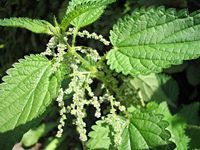
Stinging Nettle is a perennial that is not easily forgotten by anyone who has come across its path. As the name suggests, it inflicts an itchy sting when brushed against. The stems of the plant are covered with tiny hairs, many of them capable of injecting a chemical mixture of serotonin, acetylcholine and formic acid. It also releases histamine, which explains the itchy side effect. Most would consider the sting tolerable, although possibly quite a nuisance if inflicted unexpectedly. To some, it may even be considered a sort of novelty entertainment. Urtica dioica is only one species of nettle with similar properties. It is found in many parts of the world including North America, Europe, parts of Asia and even northern Africa. Typically standing about 3-4 feet in height, it is commonly found in moist soils near creeks and streams. Aside from the sting, nettle is actually used for food and an array of medicinal purposes. It has even been used to brew beer. Rich in vitamins A,C, D and K, as well as in iron, potassium and magnesium, the foliage is used similarly to spinach before it enters the flowering stage. After flowering, it is considered unsafe to eat though. The chemicals in the plant are neutralized by drying or cooking, and they can even be soaked in water to make handling easier. Its medicinal uses have been applied to those with congestive heart failure, rheumatism, anemia, asthma, hay fever, kidney problems and especially those with arthritis and joint problems. It is a diuretic and works to stop bleeding. It is even said to help boost testosterone and act as a hair tonic.
Growing Information: Nettle seeds require light to germinate. Choose a permanent location that is somewhat isolated because nettles can spread rather easily. Your soil should be rich, moist and in partial shade to full sun. The seeds may be started indoors and transplanted or sown directly outdoors. If using small packets, it may be best to transplant. Sow the seeds on the surface of the soil and pat down very lightly. An equal final spacing of about 12″ around is suitable for great growth. Harvest the plant down to the base in May to June before flowering begins. Gloves are needed when handling.
In purchasing, international buyers agree to assume the risk of arrival of all items. We cannot replace lost or seized items. You will be required to confirm that you agree to these terms before items can be sent.
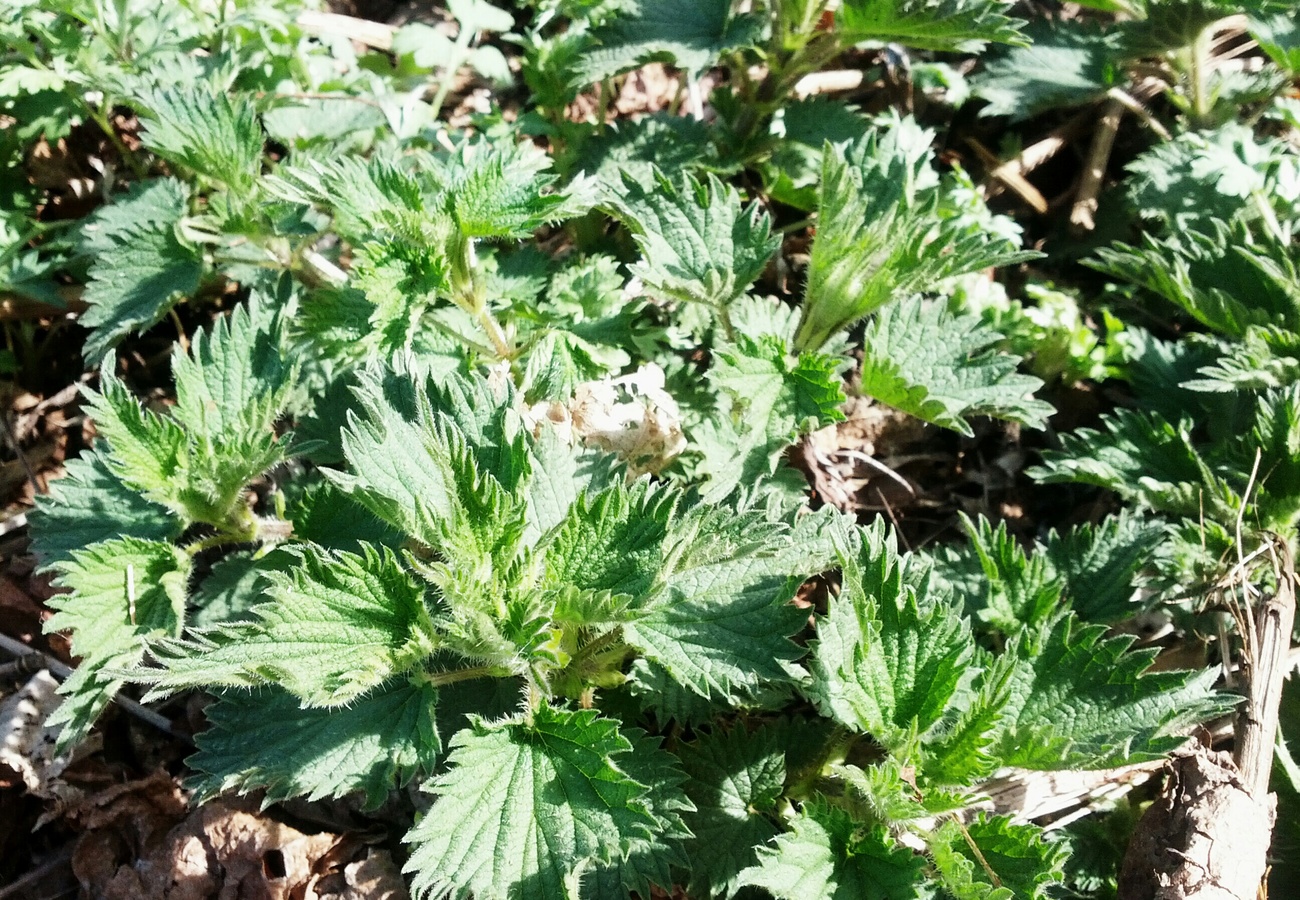
Urtica Urens is a close relative of the more well-known stinging nettle, urtica dioica. Urtica urens, also known as dwarf nettle or annual nettle, is actually more effective at stinging because it has more stingers in a given space. Urens may therefore, work better for certain medicinal applications. The stems of these two species are covered with tiny hairs, many of them capable of injecting a chemical mixture. The chemical concoction in dioica has been reported to conatin a mixture of serotonin, acetylcholine and formic acid. It is uncertain if the same mixture exists in urens, but the action is very much alike. Most would consider the sting tolerable, although possibly quite a nuisance if inflicted unexpectedly. To some, it may even be considered a sort of novelty entertainment. Yet, there are some east Indian species of urtica known to cause excessive stings and even death. Both urtica urens and dioica can be found growing in North America, Australia, Europe and many other parts of the world. Typically standing about a foot in height, urens is shorter and has smaller leaves than urtica dioica. Aside from the sting, nettle is actually used for food and an array of medicinal purposes. The chemicals in the plant are neutralized by drying or cooking, and they can even be soaked in water to make handling easier. Its medicinal uses are especially applied to reducing allergies, rashes, eczema, chicken pox, burns and insect bites. It is also used by those with congestive heart failure, high blood pressure, gout, rheumatism, anemia, asthma, hay fever, kidney problems and especially those with arthritis and joint problems. It is reportedly a diuretic, blood sugar regulator and an astringent. Additionally, it may work to stop bleeding.
Growing Information: Nettle seeds require light to germinate. Choose a permanent location that is somewhat isolated because nettles can spread rather easily. Your soil should be rich, moist and in partial shade to full sun. The seeds may be started indoors and transplanted or sown directly outdoors. If using small packets, it may be best to transplant. Sow the seeds on the surface of the soil and pat down very lightly. An equal final spacing of about 12” around is suitable for great growth. Harvest the plant down to the base in May to June before flowering begins. Gloves are needed when handling.
In purchasing, international buyers agree to assume the risk of arrival of all items. We cannot replace lost or seized items. You will be required to confirm that you agree to these terms before items can be sent.
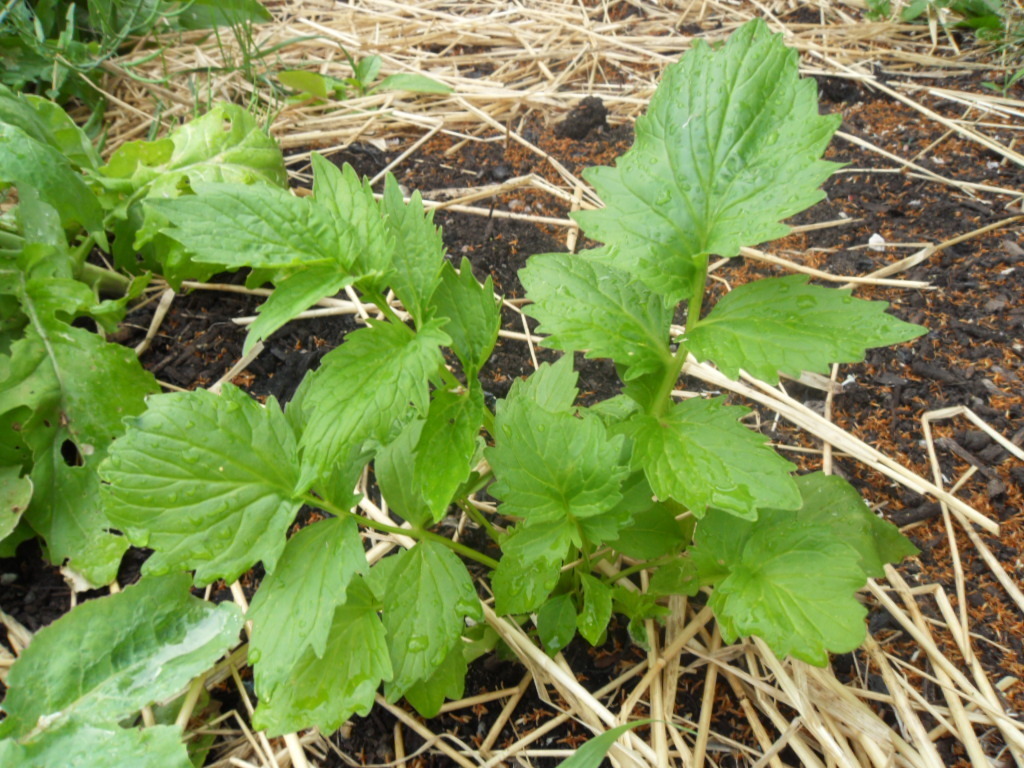
Valerian is a perennial herb native to Europe and Asia that typically reaches 2-5 feet in height and forms clusters of flowers that can range from pink to white to purple. Naturalized in North America, valerian has been widely used since ancient times to treat a variety of ailments that include sleep disorders, anxiety, headaches and depression. Working on similar receptors in the brain, it is sometimes used as a milder alternative to chemical sedatives. It has also been used as a flavoring and an herbal tea.
Growing Information: For best result, valerian seeds should be cold stratified. This can be done by placing the seeds in moist sand or a moist paper towel and putting them in the fridge for four weeks prior to planting. They can then be surface sown outside in the spring. Instead of using the fridge, some growers sow the seeds outside in the natural cold in late January to early February. Valerian prefers full sun to partial shade and moist soil, preferably a rich heavy loam. To increase root size, prevent the plant from flowering by cutting the tops. The roots can be dug for harvesting in September of the second year of growth. Roots can also be divided in the spring to propagate new plants.
In purchasing, international buyers agree to assume the risk of arrival of all items. We cannot replace lost or seized items. You will be required to confirm that you agree to these terms before items can be sent.

Verbascum Thapsus, known as Great Mullein or Common Mullein is a hardy biennial-perrenial found throughout much of Europe and the United States. It has long been used as a medicinal, acting as a mild sedative and narcotic, an emollient, an expectorant and an astringent. It has traditionally been smoked or made into a tea for coughs and asthma. It is also applied topically for a variety of other ailments. Both the leaves and flowers are used. It is resistant to pests and disease, which might explain some of its astringent and antiviral properties. In its first year, mullein forms rosettes of thick, hairy leaves that somewhat resemble those of tobacco. The following spring a stalk sporting clusters of tiny yellow flowers emerges from the center of the rosette. Mullein can reach 6-7 feet in height. The plant also creates fluffy chaff that makes excellent tinder and was used to make wicks before the use of cotton. The stalks of the plant were also traditionally dipped in suet to be made into torches. Mullein was even reportedly used for making dye.
Growing Information: Seeds can be sown directly outdoors or started indoors. Sow seed on the surface of the soil without covering and keep damp. Typical germination time is around two weeks. Thin your plants to about 16 inches apart because they will flush out. This plant prefers disturbed soils and does well in soils containing gravel, rocks, clay or chalk. For best results, your growing area should be open with good sun exposure.
For more Information visit
http://www.illinoiswildflowers.info/weeds/plants/great_mullein.htm
In purchasing, international buyers agree to assume the risk of arrival of all items. We cannot replace lost or seized items. You will be required to confirm that you agree to these terms before items can be sent.
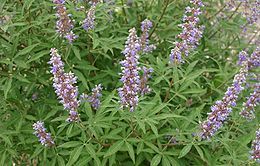
Vitex Agnus-castus, otherwise known as Chaste Tree, is an aromatic ornamental shrub that is related to verbena. Growing to anywhere between 10-20 feet in height, this winter-hardy species has spikes of lavender flowers and is sometimes referred to as wild lavender. Chaste tree, native to the Mediterranean, is generally considered an easy plant to grow and is tolerant of drought and poor soil as long as it is well-draining. In the past, chaste berries, which look similar to peppercorns, were used as a pepper substitute. This led to the name Monk’s Pepper Tree. The ancient Greeks and Romans believed that the chaste tree was capable of warding off evil. In magick, chaste berries are used as a protective herb for banishing evils from the household and removing negative energy. It is considered useful for purification, chastity and fertility. In herbal medicine, chaste berries are also used to balance hormones, especially during PMS episodes, and as a tonic for the female reproductive system. As part of this, chaste berries are also said to improve breast milk production. Chaste berries are also pounded down and applied for various pains, spasms and inflammation. Additionally, they are used to stop flatulence and diarrhea while promoting urination.
Growing Information: Seeds will benefit from exposure to cold for 3 weeks prior to germination. This can be accomplished by keeping refrigerated in a moist paper towel or moist sand. Afterwards, sow your seeds at a depth of about 1/2″ in a well-draining soil. Drainage is essential with this species, even though it can tolerate infertile or alkaline soils. Keep the soil warm and moist. Even after germination, the best growth will occur when the soil stays evenly moist (not wet). However, this species is known to tolerate drought. This plant can be grown indoors in a sunny location or outside. It is considered hardy in zones 5-9. When planting outdoors in a permanent location, it is best to wait until the plant reaches a height of about 1-2 feet so that it will be large enough to endure its first winter. Full sun will produce the best growth, although this species can tolerate partial sun. Trim back after frost if desired.
In purchasing, international buyers agree to assume the risk of arrival of all items. We cannot replace lost or seized items. You will be required to confirm that you agree to these terms before items can be sent.
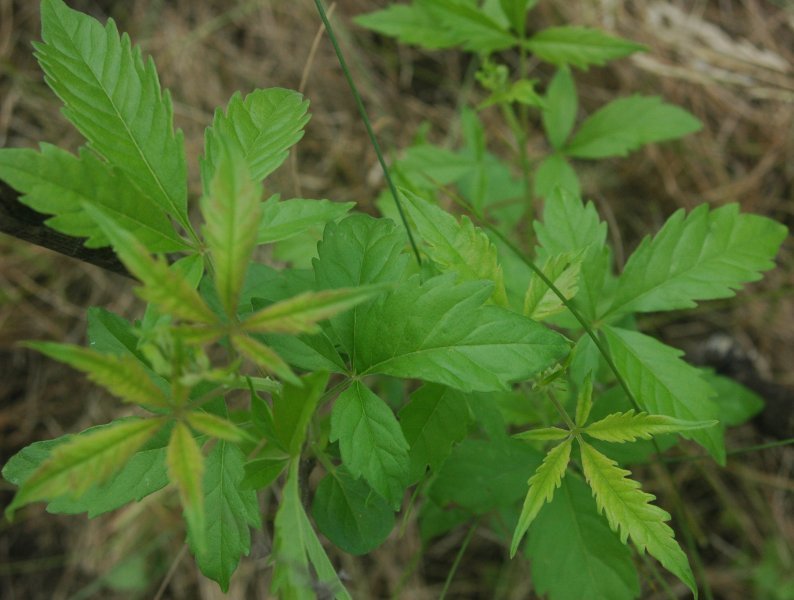
Vitex Negundo, known as Chinese Chaste Tree is an ornamental, aromatic shrub related to the traditional Chaste Tree, vitex angus-castus. Vitex Negundo is also known as Fine-leaved Chaste Tree in addition to a number of Sanskrit and Indian names. The name chaste tree is derived from ancient Greece where Athenian women would place leaves of the chaste tree in their beds during the feast of Cereus to remain pure and virtuous. Herbal use has existed for centuries. The plant is reported to have antibacterial and antifungal properties. The leaves, flowers and roots of the plant have been used as an herbal remedy for joint inflammation, particularly from rheumatism, arthritis and sprains. It is perhaps because of its reported antifungal and antibacterial qualities that vitex negundo has been used as an herbal remedy for leprosy and other skin diseases. Other herbal applications for the Chinese Chaste Tree include diarrhea, cholera, liver disease, colds, flu and asthma. Like vitex angus-castus, the seeds of negundo can be used as a spice. Vitex negundo is native to the Mediterranean, Africa, Madagascar, the Philippines and central Asia, but it will grow in the parts of North America as well. Vitex Negundo will grow in colder climates than vitex angus-castus, but both my require protection from cold winter weather. It can grow to be five feet in the first season, but benefits from being cut back in the spring. It can eventually reach a height of up to 25 feet. This species also tends to attract bees that can pollinate your garden.
Growing Information: This species is considered hardy from zones 6-10. It does best in a sandy or clay loam in moderate to full sun. Sow your seeds at a depth of about 1/2’” in a well-draining soil. Drainage is essential with this species, even though it can tolerate infertile or alkaline soils. An ideal ph is around 5.5-7.5. Keep the soil warm and moist. Even after germination, the best growth will occur when the soil stays evenly moist (not wet). . This plant can be grown indoors in a sunny location or outside. When planting outdoors in a permanent location, it is best to wait until the plant reaches a height of about 1-2 feet so that it will be large enough to endure its first winter. Full sun will produce the best growth, although this species can tolerate partial sun. Trim back after frost if desired.
In purchasing, international buyers agree to assume the risk of arrival of all items. We cannot replace lost or seized items. You will be required to confirm that you agree to these terms before items can be sent.
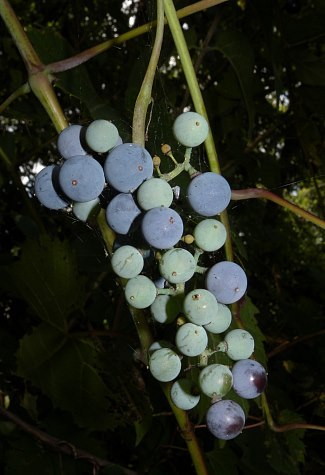
Vitis Riparia is a North American perennial relative of the common grape (vitis vinifera) that it is widely used as a grafting stock for vitis vinifera. Also known as River Bank Grape, vitis riparia is integral to the winemaking process in many cases, even though the fruits are not used for fermentation. River Bank Grapes are generally considered too acidic a non-palatable to be used as a juice for wine production. But these wild grapes are much hardier than common grapes, being more resistant to cold and disease while also adapting to a wider range of soil. Some reports suggest that vitis riparia can cope with temperatures as low as -40 degrees Fahrenheit! By using riparia as a grafting stock, it gives winemakers a much wider set of options, allowing grapes to thrive in conditions that might otherwise be problematic.
Growing Information: Vitis riparia usually prefers cold treatment in order to germinate. Usually a period of 3-7 months is ideal. In northern area, they can be sown outdoors in the fall for growth the following spring. In other areas, or when preferred, the seeds can be kept damp and placed in the fridge for the cold treatment period. Some growers choose to scarify, or sand down the seed coat a bit to allow moisture in more easily then soak the seeds for 24 hours. Be patient because seed can take up to a year to germinate. Riparia can tolerate a wide range of soils, although usual pH falls between about 6.1 and 8.5. These plants do well in shade, but they enjoy full sun as well. Provide structure for climbing. Little maintenance is required once the plant is established. This plant is ideal for zones 3-9.
In purchasing, international buyers agree to assume the risk of arrival of all items. We cannot replace lost or seized items. You will be required to confirm that you agree to these terms before items can be sent.
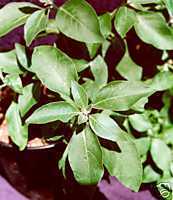
With origins on the Indian subcontinent (India, Pakistan, Sri Lanka, and Bangladesh) Ashwagandha has a variety of herbal uses. Used primarily as an immune booster, Ashwagandha is considered to be a rasayana herb, a term that means rejuvenation in ayurvedic medine. Roughly translating into “knowledge of long life,” Ayurvedic medicine dates back to ancient India.
Some people call this plant Indian ginseng because it has similar uses to Ginseng in Chinese medicine. Several drug companies are currently competing for patents for Ashwagandha, claiming it to be effective as an antioxidant, aphrodisiac and diuretic. It is also used as a treatment for memory loss, fever, arthritis, tumors, anxiety and to promote overall wellness.
A part of the tomato family, Indian ginseng is a shrub that grows to be about 170cm tall. Its roots and berries are the source of its medicinal use. Several cultivars have been developed from Ashwagandha, it can also be found in the Middle East, North Africa, and the Mediterranean. Some people have complained about drowsiness as a side effect. Accordingly, it is also used for its sedative properties. As with any other herbal remedy, it is recommended you consult your doctor first.
Genus: Withania
Family: Solanaceae
Subfamily: Soloanales
Growing Information: Sow seeds by just pressing into a moist sandy soil mix. Maintain temperatures of about 68 degrees Fahrenheit. Do not prechill the seeds as studies have shown this to decrease viability. Indian Ginseng is considered to be an easy plant to grow once established. It grows best in full sunlight in dry, well-draining soil with a slightly alkaline ph. Seeds should be sown in early spring in a greenhouse or started indoors. Germination usually begins within two weeks.
In purchasing, international buyers agree to assume the risk of arrival of all items. We cannot replace lost or seized items. You will be required to confirm that you agree to these terms before items can be sent.
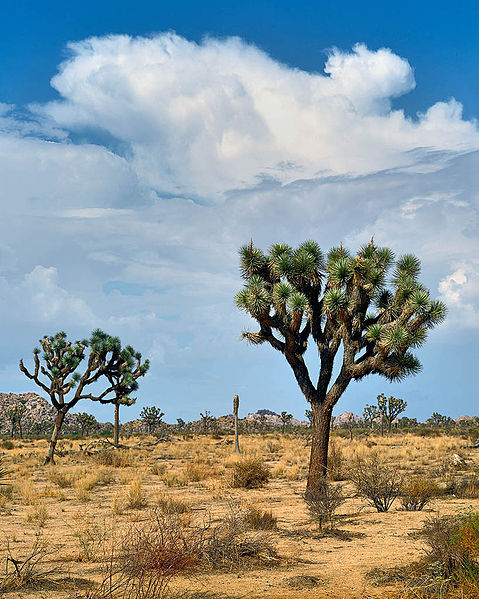
The Joshua Tree is a classic icon of the Mojave Desert and can be found throughout an area that includes California, Arizona, Utah and Nevada. The tree was named by Morman immigrants who thought the tree reminded them of the biblical figure, Joshua, praying to the heavens. Joshua Tree is actually a succulent whose trunk is made of fibers, and unlike an actual tree, it does not have age rings that can be used to date the tree?s age. Specimens are said to be able to survive about 200 years though. The leaves of the tree are durable, making them a valuable material for weaving amongst natives like the Cahuilla Indians. Additionally, the buds are edible and the branches were used as fencing. Trees can reportedly reach about 45-50 feet.
Growing Information: Sow your seeds at a depth of 1/8″ in a commercial cactus potting mixture. Many growers prefer to set the pot in a dish of water, allowing the water to wick up through the soil. Some research suggests that keeping the seeds at high temperatures (around 90 degrees F) for about 5 minutes before planting will increase germination rates. Ideal germination temperature is roughly 64-77 degrees Fahrenheit. Keep moist throughout germination, but allow the soil to dry out after sprouting. Optimal daylight is 10 hours per day. Research also suggest that seedlings will grow best if subjected to 2 month of cold temperatures during the winter.
In purchasing, international buyers agree to assume the risk of arrival of all items. We cannot replace lost or seized items. You will be required to confirm that you agree to these terms before items can be sent.
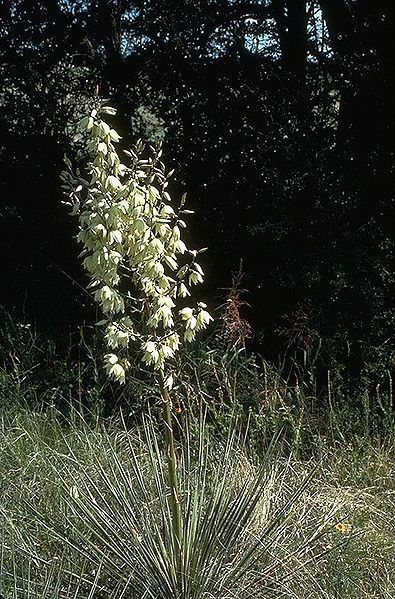
Yucca Glauca, also known as Soapweed Yucca, is an evergreen succulent plant that is closely related to the agave genus. It can tolerate a wide variety of growing conditions from indoor to outdoor growth and drought to frost. Yucca glauca populates areas of mid-western North America from Mexico up into Canada. Yucca glauca is synonymous with yucca angustifolia, and it is grown as an ornamental or landscaping plant. This is not only because of its hardiness but also because of its ornamental leaf structure and flower stalks. The flowers, which naturally bloom in May through June, are white with leaves that resemble some types of palm. As the name suggests, soapweed yucca has been used to make soap and shampoos, particularly by the Native American tribes of the southwestern U.S. Several species of yucca, including yucca glauca, were used similarly by these tribes as herbal remedies. Yucca contains water-and-fat-soluble saponins that are a precursor to cortisone. Native Americans used yucca roots to treat skin and hair conditions as well as inflammation, rheumatism and arthritis. Aside from purported effects on inflammation, some attention has been focused on a possible benefit of yucca on cartilage by clearing toxins that inhibit its growth. Aside from herbal uses, Native Americans also used the leaves for weaving and textile production. The flowers, fruits and seeds were eaten and may perhaps be one of the more available sources of food in the desert.
Growing Information: Yucca glauca seeds strongly resemble those of agave. Yucca prefers a sandy, alkaline, well-draining soil. A commercial cactus mixture is suitable. No pretreatment is necessary for yucca glauca seeds. One way of planting is to place the seeds sideways with the rims of the seeds pointing down into the soil. The opposite side of the rim should be just about equal with the soil line. Keep the soil warm and moist, not wet. Plant may eventually reach four feet in height. Full sun is recommended but not required.
In purchasing, international buyers agree to assume the risk of arrival of all items. We cannot replace lost or seized items. You will be required to confirm that you agree to these terms before items can be sent.
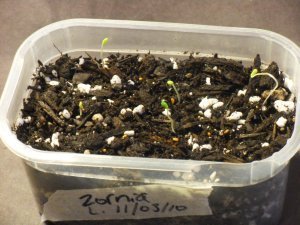
Zornia Lateriflora is currently gaining attention amongst ethnobotanical collectors after hiding in the jungles of South America (especially Brazil) and Mexico where it was traditionally used as a sedative, a relaxant and a sleep-inducer. There are some indications that zornia may even work well with dreaming due to its hypnotic qullities. Natively, this perennial herb is known as zornia diphylla, maconha brava or barba de burro, and it is believed to have been used by Ancient Gods in that region. In fact, the herb appears in Albert Hoffman and Richard Evan Schultes’ legendary book, Plants of the Gods. Zornia’s recent attention seems largely due to the fact that it is an ingredient in some of the more popular herbal incense blends. Like baybean, it is considered a good and versatile mixing herb. We are proud to be one of the few privileged vendors offering this natural rarity. We carry seeds, live plants, dried foliage and extract.
For more information visit: http://www.tropicalforages.info/key/Forages/Media/Html/Zornia_latifolia.htm http://en.wikipedia.org/wiki/Zornia_latifolia
Growing Information: These seeds have a soft, black outer seed coating covering the yellowish, hard seed. We have successfully germinated these seeds by scratching the seeds in a pinch of sand and then soaking in water overnight. We are not certain if the scratching is necessary, but we definitely do recommend soaking. These seeds enjoy a well-draining acidic mix. We have had success with Miracle Grow brand potting mix. This branching herb can grow to about 1.5-2 feet in height. It acts as a perennial in warmer climates. Once established, this species enjoys full sun and can tolerate drought.
In purchasing, international buyers agree to assume the risk of arrival of all items. We cannot replace lost or seized items. You will be required to confirm that you agree to these terms before items can be sent.
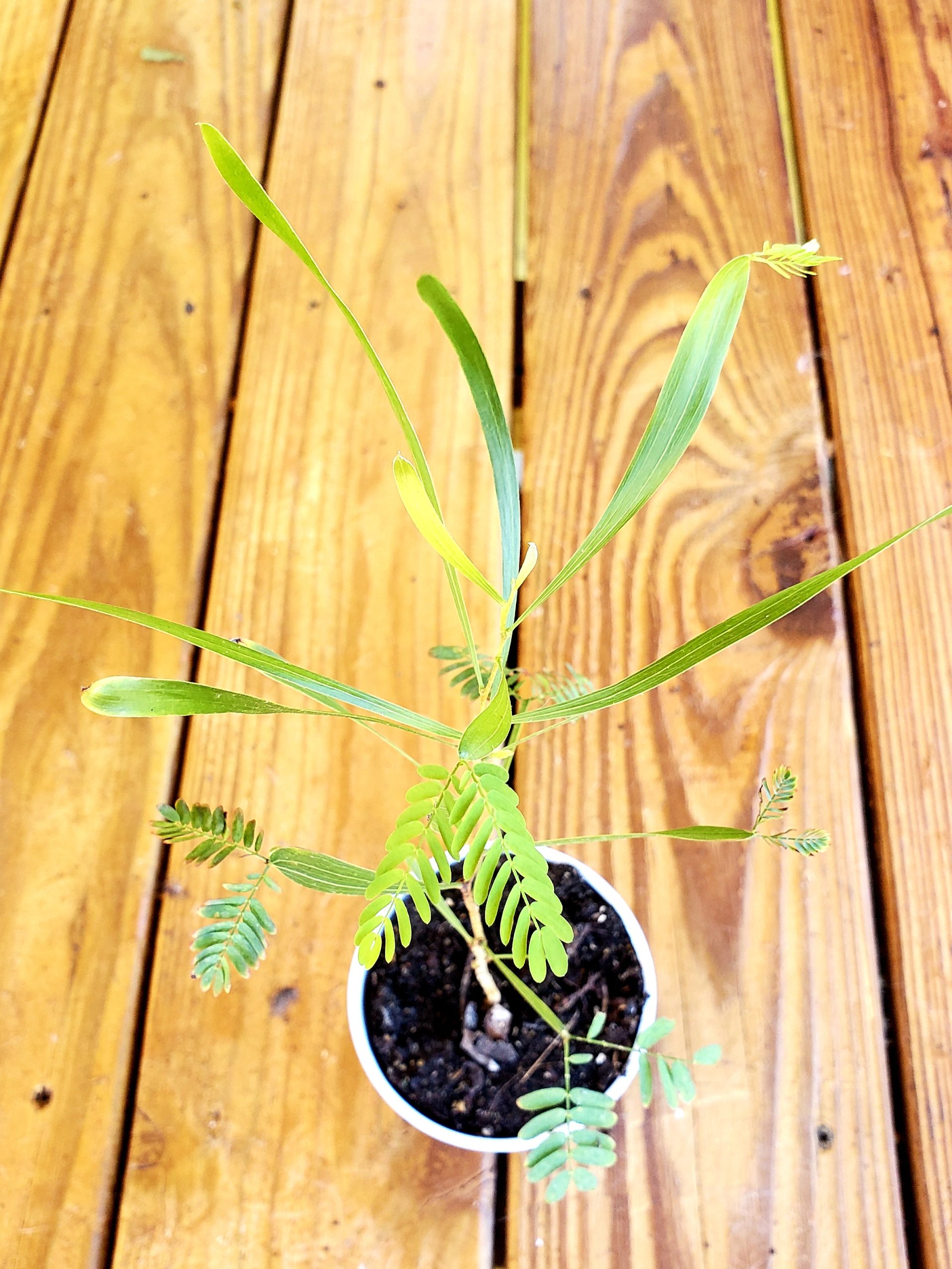
Also known as maiden’s wattle, acacia maidenii is one of the more popular acacia species although it is becoming increasingly scarce in the wild. Native to Austrailia, this perennial evergreen can be found growing at the edges of rainforests. Reaching 20-50 feet, maidenii forms a dense canopy of phyllodes with golden blooms. This fast-growing tree is hardy to about 20 degrees Fahrenheit and enjoys full sun to partial shade. A well-draining soil is required. In its first years, the soil should be kept fairly moist. However, acacia maidenii is somewhat drought-tolerant with age. Our current stock is grown from our seeds although a plant grown from cuttings of these plants may be given when seed-grown plants are not available.
Growing Information: Gradually acclimate your plants to a location in full sun or place under artificial lighting indoors. Soil should be fertile, well-draining and fertilized occasionally.
We ship live plants on Mondays and Tuesdays only, so please allow at least 1 week for shipping. SORRY, NO INTERNATIONAL SHIPPING ON LIVE PLANTS.
**Buyer is responsible for frozen plants. USPS is heated, so the plant will be fine unless you leave it at your door too long. But if you are in a cold area and cannot get the plant right away, signature confirmation can be added to the shipping cost. They will hold the plant until you pick it up.
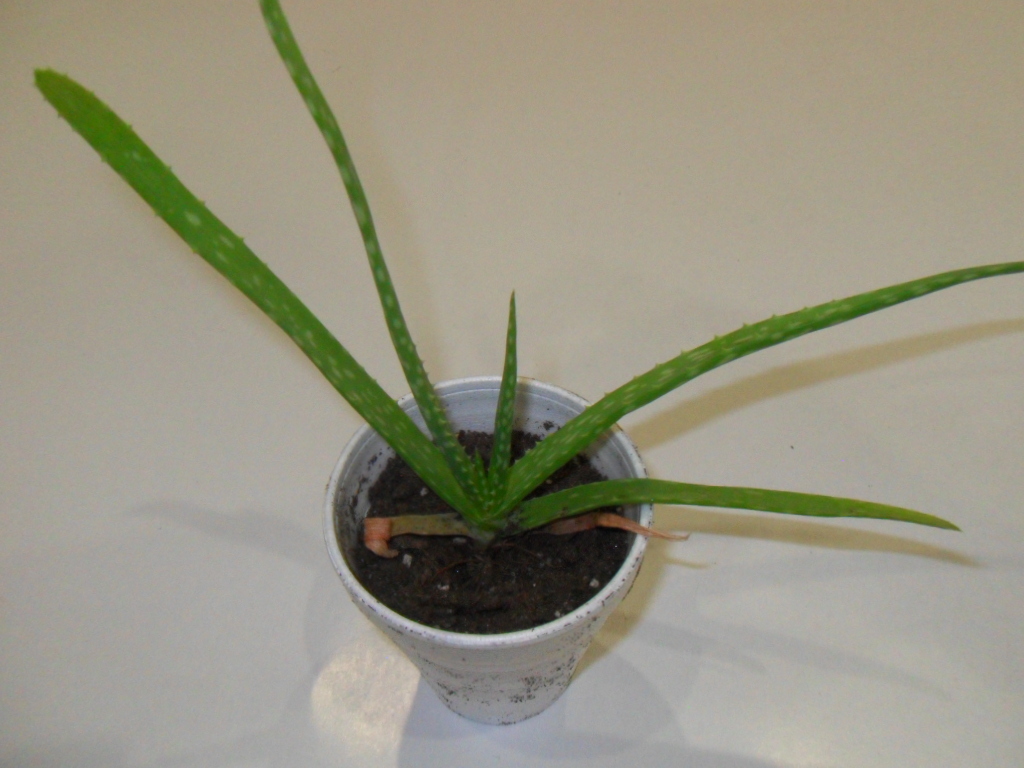
Aloe is a genus of over four hundred species. Among the most popular succulents, aloe grows in rosettes that resemble agave. The genus is native to Africa and its surrounding areas and has been historically used as a medicinal plant dating back to the Ancient Egyptians. It is still used today, particularly aloe vera, which is found in products used treat cuts and burns and promote skin rejeuvenation. Aloe species are also grown as ornamental succulents, which vary in their shapes, colors and flowers. They are ideal for rock gardens or as potted houseplants. Plants may be shipped bare root.
We ship live plants on Mondays and Tuesdays only, so please allow at least 1 week for shipping. SORRY, NO INTERNATIONAL SHIPPING ON LIVE PLANTS.
**Buyer is responsible for frozen plants. USPS is heated, so the plant will be fine unless you leave it at your door too long. But if you are in a cold area and cannot get the plant right away, signature confirmation can be added to the shipping cost. They will hold the plant until you pick it up.
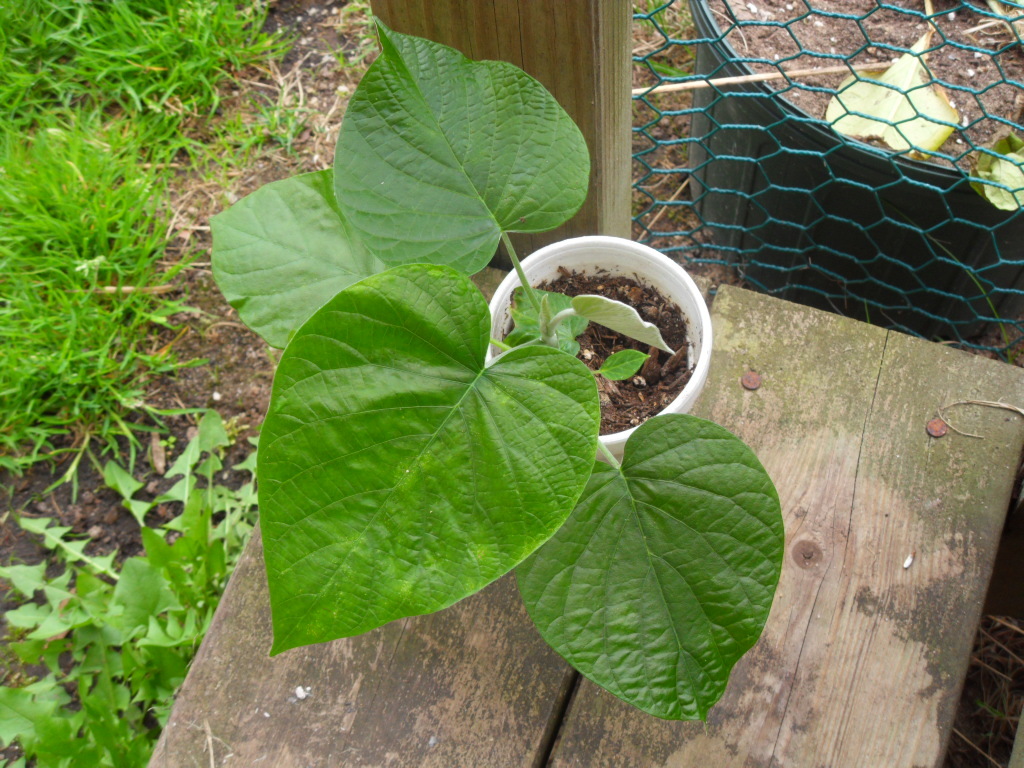
**ATTENTION**THESE SHIP FROM OUR GROWER IN FL. SHIPPING INCLUDED IN THE PRICE.
More commonly known as Hawaiian Baby Woodrose or elephant creeper, this perennial flowering vine is in the same family as morning glory (Convolvulaceae) and has similar characteristics. The name Hawaiian Baby Woodrose is said to be derived from the appearance of the seed pods which look like little wooden roses. Its leaves are heart-shaped and its trumpet-shaped flowers are white with deep purple throats. This species is not to be confused with Hawaiian Woodrose, which is another plant entirely. A. Nervosa is said to originate in Asia (Bangladesh) despite the plant’s more popular association with Hawaii. A. nervosa plants are slow-growing at first but will grow rapidly after reaching about twelve inches and can easily reach thirty feet with maturity. Since A. Nerovsa is a vine, it will need structure to climb and is especially useful in providing floral decor for fences, mailbox and trellis. These plants can be grown outdoors all year round where temperatures do not freeze or be put in pots and be brought indoors for the winter elsewhere. Cuttings can also be taken by layering. The roots, leaves and seeds were used in traditional Ayurvedic medicine for a variety of purposes including, purification, nervous system support, joint health and sexual arousal. Despite traditional use in India, the seeds should not be used in the United States because they contain compounds that are illegal to ingest. Given its Asian origin, this plant does not appear to have been a part of South American shamanic traditions as some sources indicate. However, it is now cultivated tropical America.
We ship live plants on Mondays and Tuesdays only, so please allow at least 1 week for shipping. SORRY, NO INTERNATIONAL SHIPPING ON LIVE PLANTS.
**Buyer is responsible for frozen plants. USPS is heated, so the plant will be fine unless you leave it at your door too long. But if you are in a cold area and cannot get the plant right away, signature confirmation can be added to the shipping cost. They will hold the plant until you pick it up.
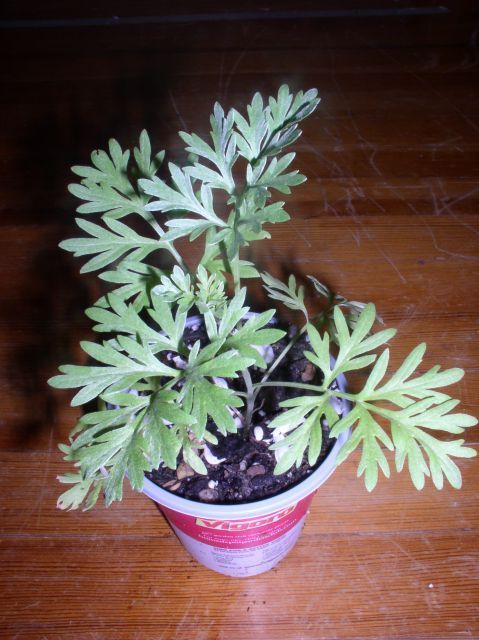
Wormwood is a highly aromatic, silvery-green, extremely hardy, perennial herb that has for centuries been used for an array of purposes. Among its various applications in folk medicine, it was used to alleviate stomach and digestive ailments, increase appetite and treat liver problems. However, overuse can cause negative health effects. It is the most notable ingredient in the legendary green liquor, absinthe. Native to Europe, it was brought the United States and is grown commercially in the northeast as well as in gardens throughout the country. The oil is used in aromatherapy. It is said to have antimicrobial properties and is used to treat worm infestations in pets. Wormwood also repels moths, slugs and other garden and household pests. The plants become hedge-like with age growing to about five to six feet in height, which makes wormwood a cheap, effective cover from neighbors.
Wormwood is extremely easy to grow. It can be grown in most soils and will even survive indoors. However, it prefers full sun. Slowly acclimate you plant to a place in full sun. A single plant can put on pounds per season.
We ship live plants on Mondays and Tuesdays only, so please allow at least 1 week for shipping. SORRY, NO INTERNATIONAL SHIPPING ON LIVE PLANTS.
**Buyer is responsible for frozen plants. USPS is heated, so the plant will be fine unless you leave it at your door too long. But if you are in a cold area and cannot get the plant right away, signature confirmation can be added to the shipping cost. They will hold the plant until you pick it up.
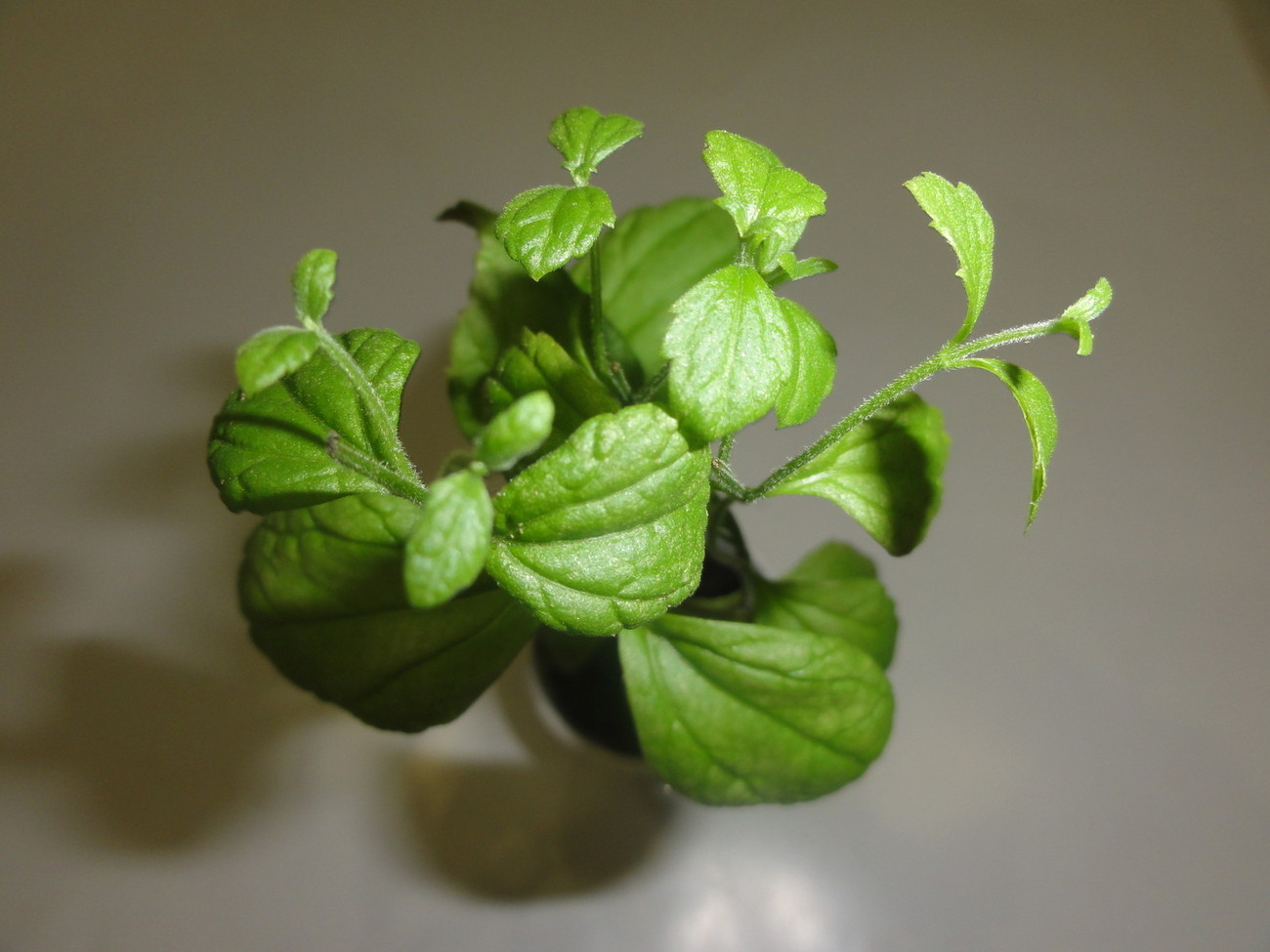
**ATTENTION**THESE SHIP FROM OUR GROWER IN FL. SHIPPING INCLUDED IN THE PRICE.
World Seed Supply is proud to bring to market Calea Zacatechichi “Rest in Peace” live plants. “Rest in Peace” is a bitter variety calea clone that we originally grew from seed. We also have another clone called “Satellite”. If you’ve ever seen either of these names, they are clones that began right here. Our customers had been asking us for bitter variety plants for a long time. So we were able to produce our own bitter calea strain, which is now being spread around the U.S. We also offer the non-bitter variety, which is what the majority of calea plants available are. (Our primary non-bitter clone is called “Sweet Dreams”). But these bitter plants are quite rare. You will find a picture comparing the bitter (right) vs. non-bitter (left) calea leaf. The non-bitter leaf tends to be more triangular in shape and is often a darker shade of green. Calea is a quick grower, but the bitter variety does require more light and water. Without these conditions, it is much more prone to leaf drop and spindly growth. If you see this, it is a sign that the plant needs more light. Cutting back the shoots will also help promote thicker, bushier growth. We also offer a variety of other calea products and dreaming herbs.
Growing Information: https://www.worldseedsupply.com/how-to-grow-calea-zacatechichi-from-seeds-and-cuttings/
We ship live plants on Mondays and Tuesdays only, so please allow at least 1 week for shipping. SORRY, NO INTERNATIONAL SHIPPING ON LIVE PLANTS.
**Buyer is responsible for frozen plants. USPS is heated, so the plant will be fine unless you leave it at your door too long. But if you are in a cold area and cannot get the plant right away, signature confirmation can be added to the shipping cost. They will hold the plant until you pick it up.
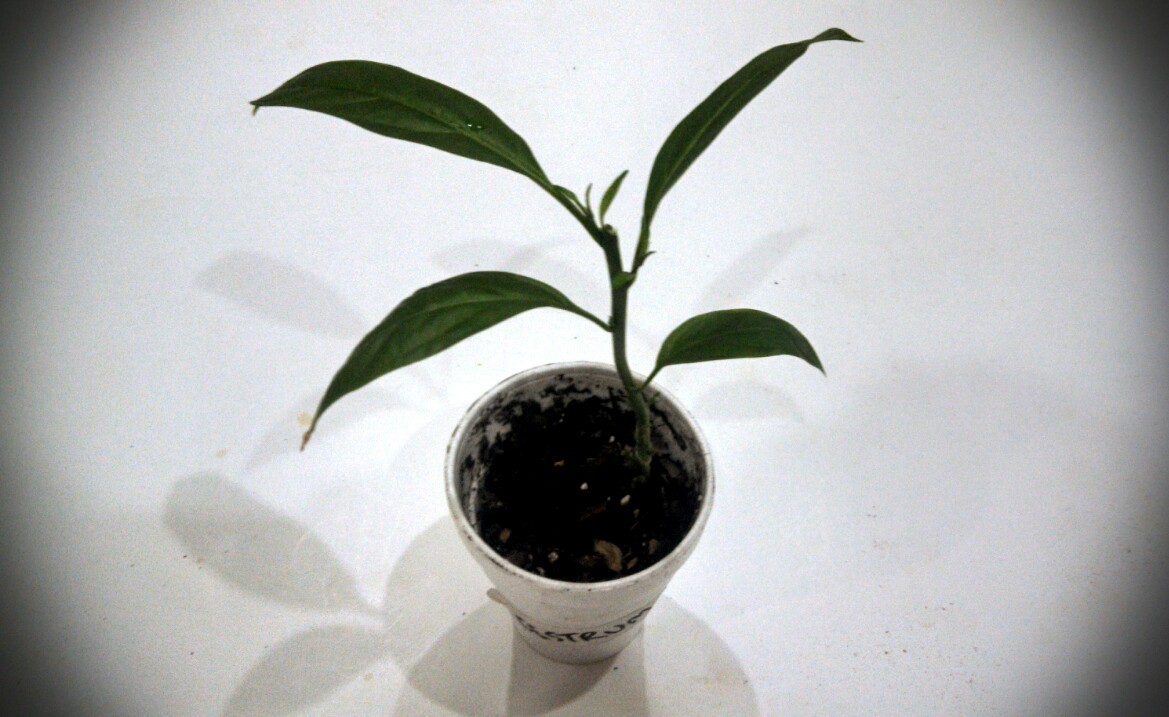
Cestrum Nocturnum is a perennial flowering shrub native to Central and South America. This rapid grower can easily reach 10-12 feet in height and usually must be trimmed back to maintain desired size, particularly if grown indoors. Cestrum nocturnum reproduces by seeds and stem cuttings that can be rooted in plain water. Therefore, trimming can be a time to multiply your plants. Cestrum nocturnum is commonly known as Night-blooming Jasmine, Night Queen or Lady of the Night. These names derive from cestrum nocturnum’s habit of blooming at night. The greenish white flowers of Night-blooming Jasmine are among the most fragrant in the world. Cestrum Nocturnum’s flowers resemble those of nicotiana alata, which is similarly named, Jasmine Tobacco. Jasmine Tobacco is also white-flowered, fragrant and blooms at night. Another commonality is that cestrum nocturnum, like tobacco, is a member of the nightshade (Solanaceae) family. Although it blooms at night, cestrum nocturnum is so potent that it is still fragrant during the day. To some, the scent is overpowering to the point that it can cause dizziness. Some growers say that the scent helps repel mosquitoes. Cestrum nocturnum produces white berries. The unripe berries are considered to be poisonous. But it seems that there is a tradition of shamanic use of the fresh or dried flowers in Nepal. The shamans there call it hosanna. Little is known in the Western world about the use of this plant in that way, and all parts of the plant are generally regarded as poisonous. Ingestion can be lethal.
We ship live plants on Mondays and Tuesdays only, so please allow at least 1 week for shipping. SORRY, NO INTERNATIONAL SHIPPING ON LIVE PLANTS.
**Buyer is responsible for frozen plants. USPS is heated, so the plant will be fine unless you leave it at your door too long. But if you are in a cold area and cannot get the plant right away, signature confirmation can be added to the shipping cost. They will hold the plant until you pick it up.
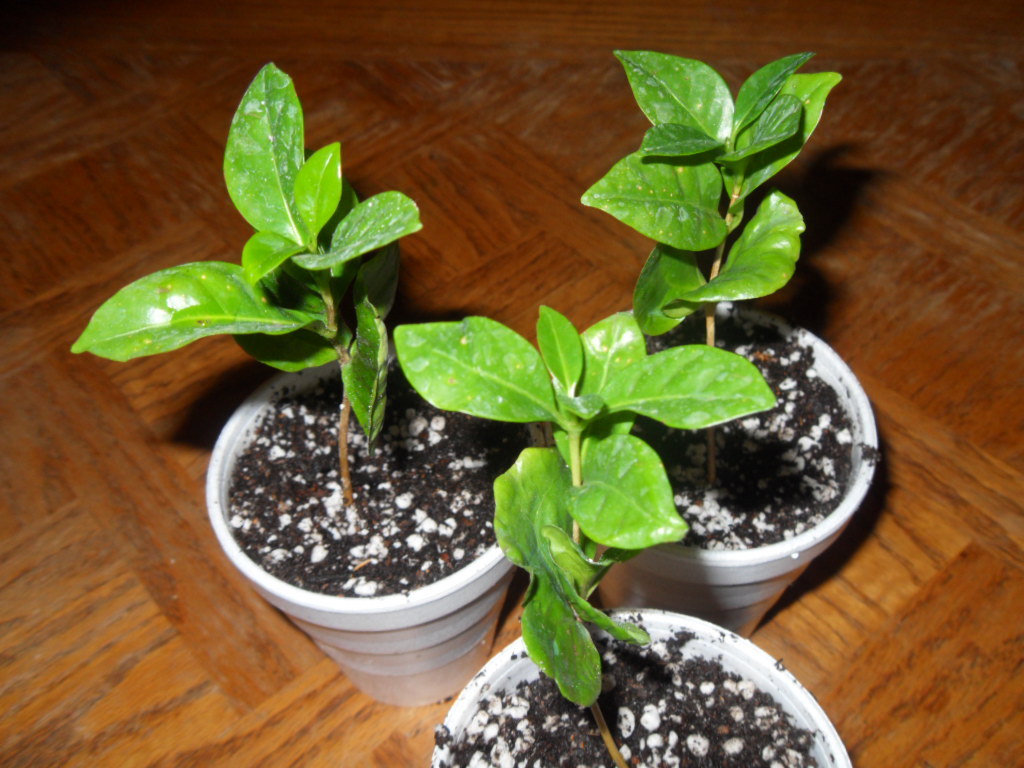
Coffea Arabica is the variety whose beans are most commonly sold by coffee companies. Arabica has been cultivated in the Middle East since the sixth century, and evidence suggests that it was originally native to Ethiopia. As one of the world’s most popular commodities, it is grown commercially throughout South America. Commercial growth focuses on quick production and larger beans and so plants are placed in full sun and watered extensively. Naturally, though, coffee grows in a semi-shaded area, which is said to produce a higher quality, although smaller bean. Growing your own coffee allows you to control this factor and potentially produce a higher quality, more organic coffee. Coffee makes an excellent houseplant that is relatively easy to grow and requires low maintenance once established. Room temperature (65-70 degrees F) is ideal. It has attractive, dark green, glossy leaves. After two to three years, plants will begin blossoming white flowers and producing dark red cherries containing two beans each. Occasionally, berries will only contain a single bean, and these beans are said to have a distinct flavor. Outdoors plants can reach ten to thirty feet in height if left untrimmed. Plants are capable of producing up to two pounds of coffee beans per year. Indoor plants will not grow nearly as large and can easily be controlled by pruning. New plants can be propagated by taking cuttings as you prune.
Our plants are seedlings grown from seed. Growing from seed can be slow and tricky. These seedlings will save you significant time and possible failure growing from seed for not much more than a pack of seeds. Multiple plants may be sent in compots to save on shipping. These seedlings typically transplant easily. Seedlings will range in size depending on stock.
We ship live plants on Mondays and Tuesdays only, so please allow at least 1 week for shipping. SORRY, NO INTERNATIONAL SHIPPING ON LIVE PLANTS.
**Buyer is responsible for frozen plants. USPS is heated, so the plant will be fine unless you leave it at your door too long. But if you are in a cold area and cannot get the plant right away, signature confirmation can be added to the shipping cost. They will hold the plant until you pick it up.
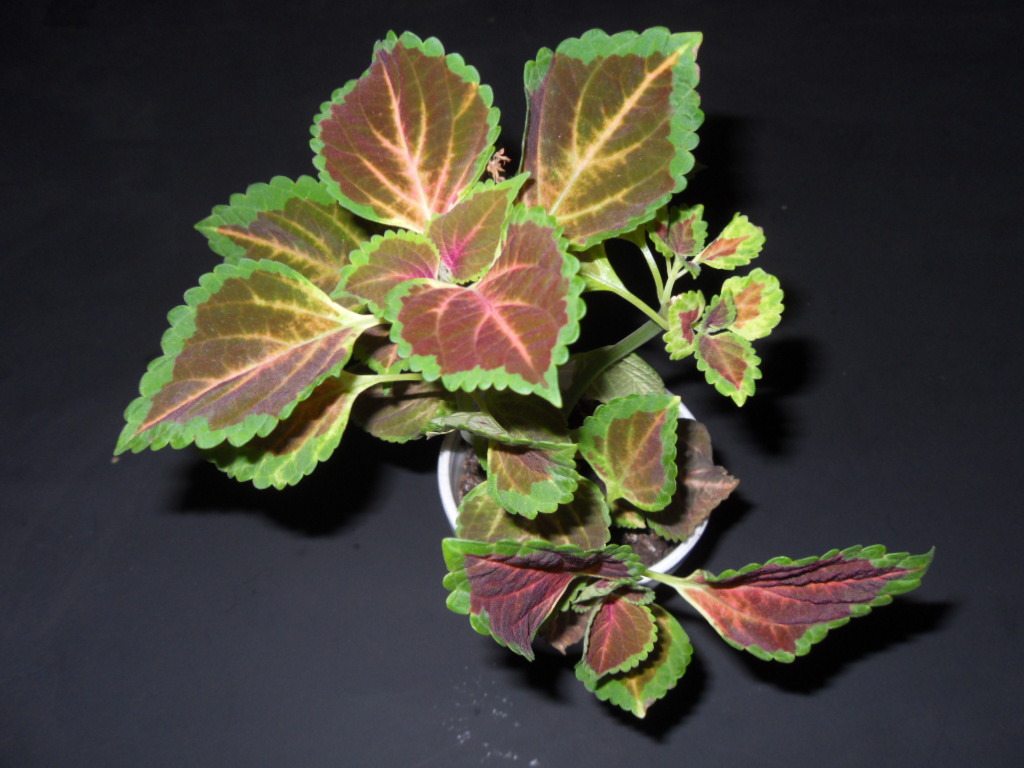
Coleus Blumei is among the most beautiful plants on earth, known for its majestic rainbow leaves that rival even the petals of most flowers. With numerous variations, it is no wonder why growers call coleus “painted nettle”. Coleus is extremely easy to grow and works well as a houseplant or as an annual landscaping plant. Coleus was first studied by Gordon Wasson following his visits with Mazatec shamans in southern Mexico. It seems from his reports that the Mazatecs used this plant medicinally as well ceremonially. Later evidence shows conflicting data with regards to coleus?s herbal potential. But it has even been postulated that coleus has potential as a dreaming herb. As coleus grows, it will form lavender flower stalks. It can easily be propagated by cuttings and will do well in plain window light. Whether you?re looking for something that is attractive, hassle-free or that has a bit of historical significance, coleus is a great choice.
We ship live plants on Mondays and Tuesdays only, so please allow at least 1 week for shipping. SORRY, NO INTERNATIONAL SHIPPING ON LIVE PLANTS.
**Buyer is responsible for frozen plants. USPS is heated, so the plant will be fine unless you leave it at your door too long. But if you are in a cold area and cannot get the plant right away, signature confirmation can be added to the shipping cost. They will hold the plant until you pick it up.
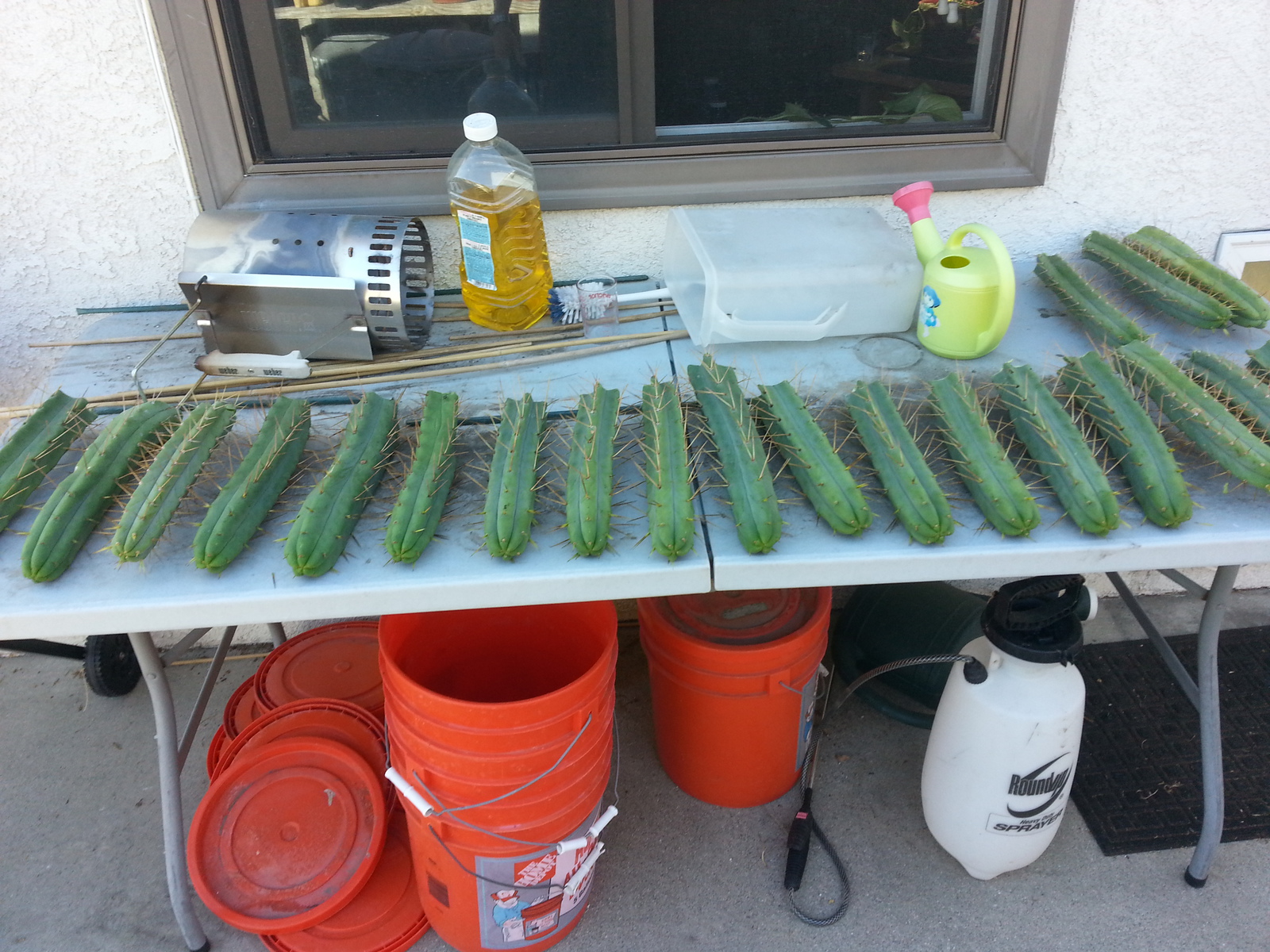
A FEW CENTER CUTS AVAILABLE. THIS PRICE INCLUDES SHIPPING.
This fast-growing columnar cactus is widely collected as an ornamental and landscaping cactus. It is also a choice grafting stock for speeding up the growth of slower-growing cacti such as astrophytum and ariocarpus. We have a select few 12” center cuttings. They are well-calloused on the end. his is a great price. We have gotten more money for smaller cutting at auction.
Trichocereus bridgesii, also classified as Echinopsis lageniformis, is a bluish-green columnar cactus native to Boliva, which is also where these seeds are from. It resembles the more common San Pedro cactus (T. pachanoi) but typically has fewer, wider ribs and longer spines. In fact, many references to San Pedro in Bolivia are believed to actually be referring to bridgesii rather than pachanoi. This cactus has gained much popularity among cactus collectors in recent years. Like pachanoi, it has huge, white blooms that make it an attractive andscaping cactus. It grows a little bit slower than pachanoi but is still a rapid grower, making it one of several trichocereus species that work well as a grafting stock for slower-growing cacti such as astrophytum and ariocarpus. It can reach fifteen feet in height and tends to produce offsets rather easily. T. bridgesii is also easy to grow from seed, but its seedlings are more prone to turning purple than many other trichocereus species when exposed to sunlight. When this occurs, be sure to reduce their exposure. It is hardy to about 30 degrees Fahrenheit and should only be watered during active growth when the soil has dried out. During the winter in areas where temperatures are too cold, plants should be brought inside where they will go dormant (stop growing). Prior to entering dormancy (late September-early October), watering should be slowly reduced until it reaches none. Plants should be brought indoors and stored in a cool, dry, dark place. Since it is not growiing, it does not require any of these essentials. When breaking dormancy, a reverse process can be applied. This will ensure nice, even growth to your cacti and reduce the chance of infection due to overwatering when the cactus’s immune system is at rest.
How to root your cactus cuttings: https://www.worldseedsupply.com/how-to-root-a-cactus-cuttting/
We ship live plants on Mondays and Tuesdays only, so please allow at least 1 week for shipping. SORRY, NO INTERNATIONAL SHIPPING ON LIVE PLANTS.
**Buyer is responsible for frozen plants. USPS is heated, so the plant will be fine unless you leave it at your door too long. But if you are in a cold area and cannot get the plant right away, signature confirmation can be added to the shipping cost. They will hold the plant until you pick it up.
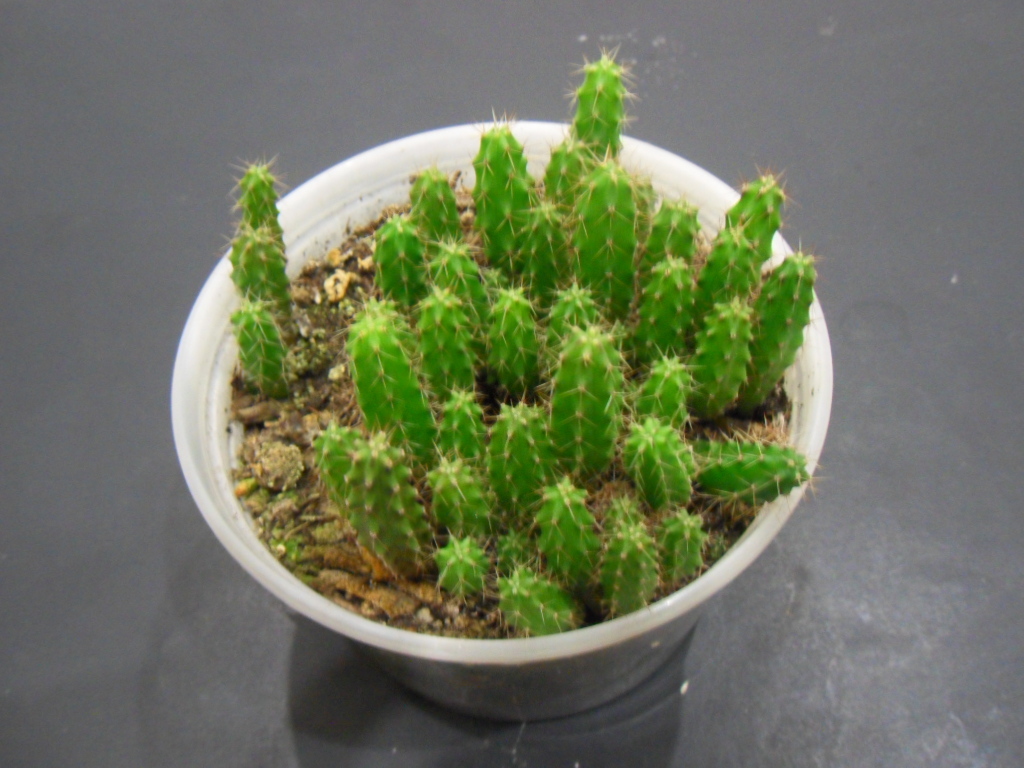
These seedlings were grown from our own stock of seeds and are several months in age. These seedlings are ideal for new growers who may not be confident growing from seeds or those who wish to get a good head start. Growing from seeds can be rewarding, but it is not for everyone. So to offer our buyers a wide variety of choices we are offering these seedlings already started. Average height about 1′-1.5″. These seedlings have great genetics and are fast growers. They’ve outperformed most of the cactus seeds we’ve ever grown. Seedlings will be shipped bare root. They can be gently transplanted into a general purpose cactus soil and will do well under fluorescent lights. They can be grown outdoors, but must be very gradually acclimated or they will sunburn or dry up. It would probably be best growing them indoors for one season (possibly two) and moving them outdoors the following summer. In areas where it freezes, they can be brought indoors for the cooler months.
Trichocereus bridgesii, also classified as Echinopsis lageniformis, is a bluish-green columnar cactus native to Boliva, which is also where these seeds are from. It resembles the more common San Pedro cactus (T. pachanoi) but typically has fewer, wider ribs and longer spines. In fact, many references to San Pedro in Bolivia are believed to actually be referring to bridgesii rather than pachanoi. This cactus has gained much popularity among cactus collectors in recent years. Like pachanoi, it has huge, white blooms that make it an attractive andscaping cactus. It grows a little bit slower than pachanoi but is still a rapid grower, making it one of several trichocereus species that work well as a grafting stock for slower-growing cacti such as astrophytum and ariocarpus. It can reach fifteen feet in height and tends to produce offsets rather easily. Trichocereus bridgesii is also easy to grow from seed, but its seedlings are more prone to turning purple than many other trichocereus species when exposed to sunlight. When this occurs, be sure to reduce their exposure. It is hardy to about 30 degrees Fahrenheit and should only be watered during active growth when the soil has dried out. During the winter in areas where temperatures are too cold, plants should be brought inside where they will go dormant (stop growing). Prior to entering dormancy (late September-early October), watering should be slowly reduced until it reaches none. Plants should be brought indoors and stored in a cool, dry, dark place. Since it is not growiing, it does not require any of these essentials. When breaking dormancy, a reverse process can be applied. This will ensure nice, even growth to your cacti and reduce the chance of infection due to overwatering when the cactus?s immune system is at rest.
Read our guide “How to Transplant a Cactus Seedling”
We ship live plants on Mondays and Tuesdays only, so please allow at least 1 week for shipping. SORRY, NO INTERNATIONAL SHIPPING ON LIVE PLANTS.
**Buyer is responsible for frozen plants. USPS is heated, so the plant will be fine unless you leave it at your door too long. But if you are in a cold area and cannot get the plant right away, signature confirmation can be added to the shipping cost. They will hold the plant until you pick it up.

This trichocereus species is most closely related to trichocereus peruvianus, although seeds and specimens are less readily available. Also a relative of trichocereus bridgesii and trichocereus pachanoi, macrogonus grows wild in Ecuador, Peru and Bolivia. It is characterized by its bluish-green skin, thick stems and multiple brown spines. Macrogonus is said to be the fastest-growing of all trichocereus species. THESE PLANTS SHIP FROM OUR GROWER IN CALIFORNIA. SHIPPING INCLUDED IN THE PRICE.
How to root your cactus cuttings: https://www.worldseedsupply.com/how-to-root-a-cactus-cuttting/
We ship live plants on Mondays and Tuesdays only, so please allow at least 1 week for shipping. SORRY, NO INTERNATIONAL SHIPPING ON LIVE PLANTS.
**Buyer is responsible for frozen plants. USPS is heated, so the plant will be fine unless you leave it at your door too long. But if you are in a cold area and cannot get the plant right away, signature confirmation can be added to the shipping cost. They will hold the plant until you pick it up.
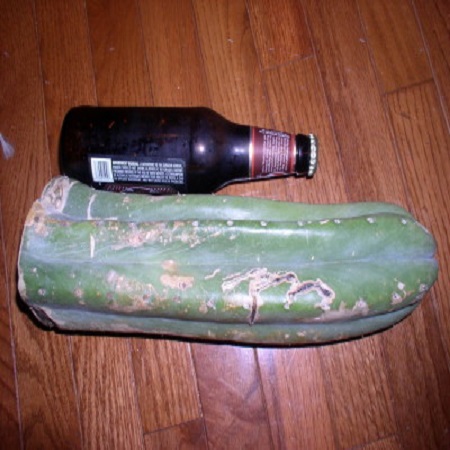
THESE PLANTS SHIP FROM OUR GROWER IN CALIFORNIA. SHIPPING INCLUDED IN THE PRICE.
The Tom Juul’s Giant or simply Juul’s Giant is a cultivar of trichocereus pachanoi that is known for fat stems and almost non-existent spines. While the Backberg clone (the predominant cultivar) of trichocereus pachanoi is already known to have very small spines, those of the Juul’s Giant are distinctly smaller. The Juul’s Giant is a highly coveted cactus that should be in every serious collector’s collection. We are proud to be able to offer 12″ tip cuttings of this prized cactus. All cuttings will be shipped from our farm out west where they can grow nice and fat.
Trichocereus Pachanoi is perhaps the most famous of the trichocereus species. This easy-to-grow, ornamental, columnar cactus is popular for a variety of reasons. It is a sacred symbol with a long history of sacramental use amongst the various peoples of its native habitat, which stretches from the Andes of Peru to Bolivia to Ecuador. A common landscaping cactus, pachanoi is also tolerant of a wide variety of conditions and can handle more water and fertilization than most cacti, making it a good species for beginners. Its small spines also make it easier to handle for those who are not experienced with dealing with sharp spines or those who have curious kids or pets that may be injured by larger spines. Additionally, it is a rapid grower, making it a favorite grafting stock for speeding up the progress of slower-growing cacti such as astrophytum and ariocarpus. Under ideal conditions, San Pedro can grow up to 18 inches per year and will readily shoot off new pups (branches). Frost hardy to about 26 degrees Fahrenheit, these cacti can be raised outdoors all year in Zone 9 or warmer. Otherwise, it should be kept in medium to large pots that can be moved inside during the winter months. Plants can be watered frequently during the summer months, sometimes as often as every two days if the top inch or two of the soil is dry. During the winter, they should be slowly acclimated to cool, dry, dark conditions to avoid stretching that could damage the aesthetics and structural integrity of the plant. When breaking dormancy in the spring, a reverse process of slowly introducing the factors necessary for growth may be beneficial for the same reason. For optimal skin color, trichocereus pachanoi should be kept in partial rather than full sun and the soil should be well-draining and rich in organic nutrients and minerals. Its blooms are large, white and have a strong, pleasant perfume.
How to root your cactus cuttings: https://www.worldseedsupply.com/how-to-root-a-cactus-cuttting/
We ship live plants on Mondays and Tuesdays only, so please allow at least 1 week for shipping. SORRY, NO INTERNATIONAL SHIPPING ON LIVE PLANTS.
**Buyer is responsible for frozen plants. USPS is heated, so the plant will be fine unless you leave it at your door too long. But if you are in a cold area and cannot get the plant right away, signature confirmation can be added to the shipping cost. They will hold the plant until you pick it up.
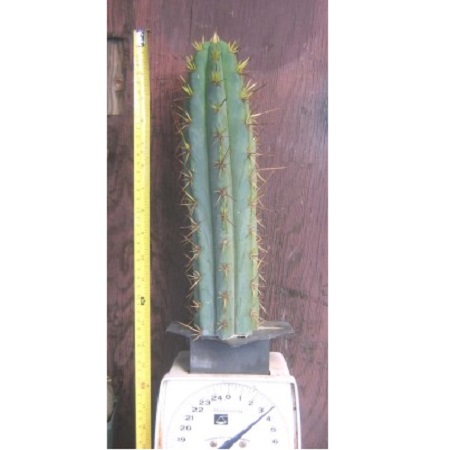
**ATTENTION: THESE PLANTS SHIP FROM OUR GROWER IN CALIFORNIA. SHIPPING INCLUDED IN THE PRICE.
Trichocereus Peruvianus is one of the most revered trichocereus species. This easy-to-grow, ornamental, columnar cactus is often recognized with San Pedro because it is also a sacred symbol with a long history of sacramental use amongst the various peoples of South America. It is somewhat less common in landscaping than pachanoi but is still tolerant of a wide variety of conditions and can handle more water and fertilization than most cacti, making it a good species for beginners. Its rapid growth rate rivals that of pachanoi (up to18 inches per year), and it can reach up to 18 feet with maturity. It is sometimes used as a grafting stock, although its large spines, which can easily measure three to four inches, make it more difficult to work with than San Pedro or Blue Myrtle. Like pachanoi, peruvianus is frost hardy to about 26 degrees Fahrenheit and can be raised outdoors all year in Zone 9 or warmer. Otherwise, it should be kept in medium to large pots that can be moved inside during the winter months. Plants can be watered frequently during the summer months. During the winter, they should be slowly acclimated to cool, dry, dark conditions to avoid stretching that could damage the aesthetics and structural integrity of the plant. When breaking dormancy in the spring, a reverse process of slowly introducing the factors necessary for growth may be beneficial for the same reason. For optimal skin color, trichocereus peruvianus should be kept in partial to full sun and the soil should be well-draining and rich in organic nutrients and minerals. Its blooms are also large and white. How to root your cactus cuttings: https://www.worldseedsupply.com/how-to-root-a-cactus-cuttting/
We ship live plants on Mondays and Tuesdays only, so please allow at least 1 week for shipping. SORRY, NO INTERNATIONAL SHIPPING ON LIVE PLANTS.
**Buyer is responsible for frozen plants. USPS is heated, so the plant will be fine unless you leave it at your door too long. But if you are in a cold area and cannot get the plant right away, signature confirmation can be added to the shipping cost. They will hold the plant until you pick it up.
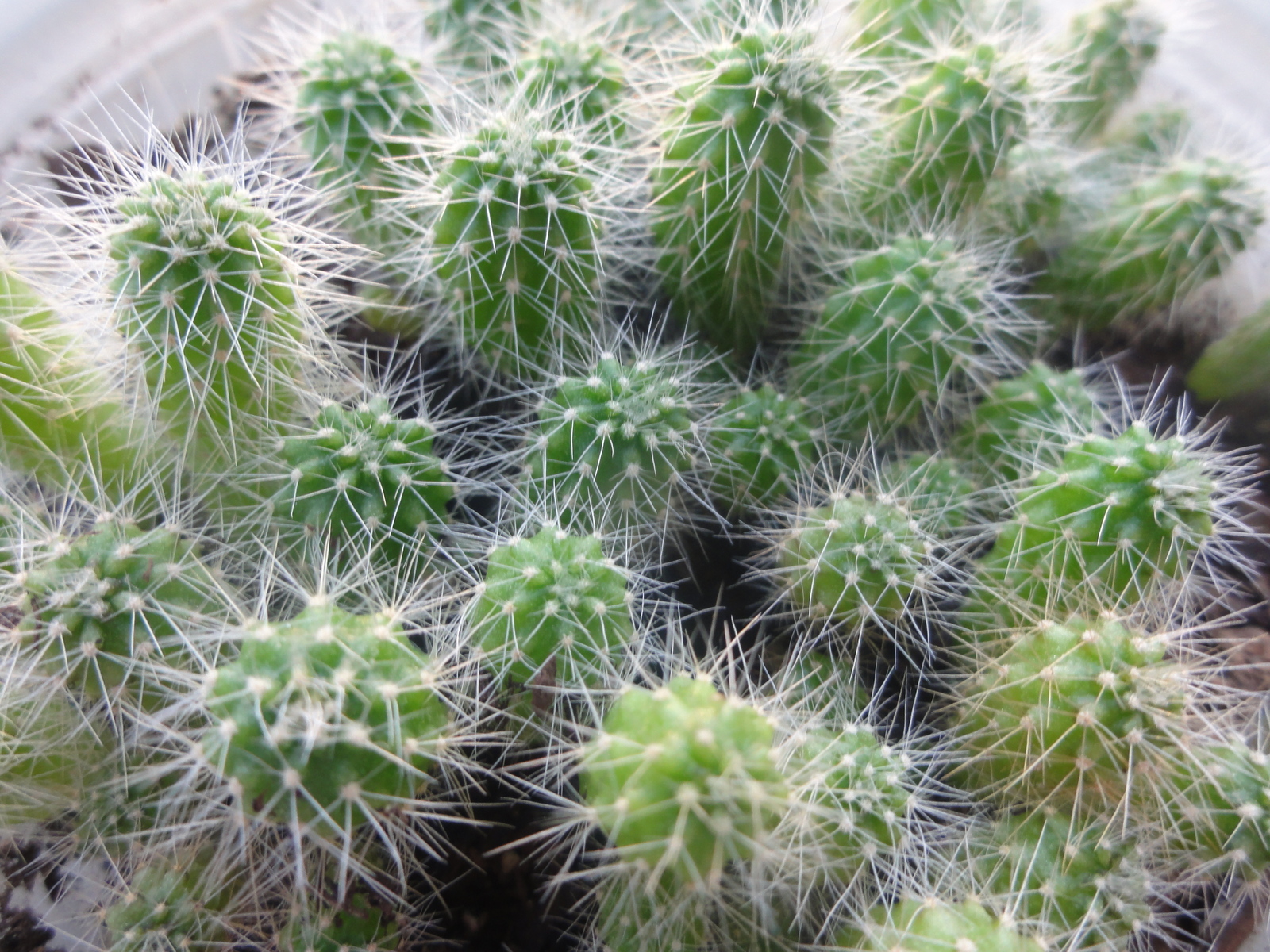
Trichocereus Spachianus is also known as Gold Torch for its numerous short, golden-brown spines. Its lime green body distinguishes it from many other popular trichocereus varieties although older cuttings can be darker. Spachianus is native to western Argentina and Bolivia and is easy to grow in pots. Starting in late spring, its huge, nocturnal, white blooms can expand up six inches in diameter and are attractive to bees. It is a rapid grower and enjoys moderate watering. Branching typically occurs at the base with stems reaching upwards of seven feet with age. This listing is for one small cactus cutting as pictured. These smaller cuttings are ideal for simple grafting projects. You can also root them simply by putting them in some lightly moist cactus soil and waiting for them to send out roots. We have large 12″ cuttings available as well.
Growing Information: https://www.worldseedsupply.com/germination-of-cacti-such-as-san-pedro-cactus-peruvian-torch-and-other-spiny-friends/
In purchasing, international buyers agree to assume the risk of arrival of all items. We cannot replace lost or seized items. You will be required to confirm that you agree to these terms before item
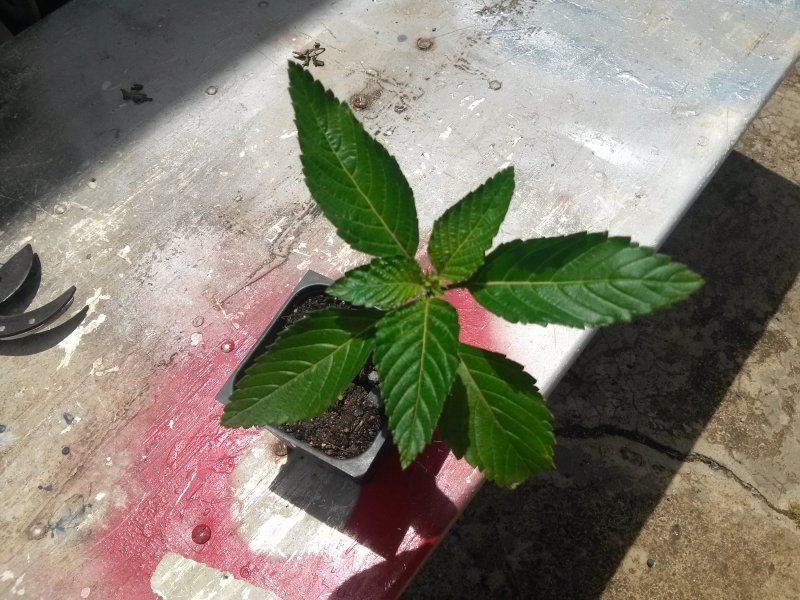
THESE SHIP FROM OUR GROWER IN FL. SHIPPING IS INCLUDED IN THE PRICE.
Turnera Ulmifolia is a close relative to turnera difussa that is often sold as damiana in many other countries. In fact, the two plants are often confused for each other, and they are used for similar purposes as an herb. Turnera Ulmifolia is an aromatic plant. Also known as Yellow Adler, turnera ulmifolia is an ornamental plant with bright yellow blooms an that can range from the size of a quarter to the size of a silver dollar. It blooms throughout the growing season.
We ship live plants on Mondays and Tuesdays only, so please allow at least 1 week for shipping. SORRY, NO INTERNATIONAL SHIPPING ON LIVE PLANTS.
**Buyer is responsible for frozen plants. USPS is heated, so the plant will be fine unless you leave it at your door too long. But if you are in a cold area and cannot get the plant right away, signature confirmation can be added to the shipping cost. They will hold the plant until you pick it up.

This is the actual plant that is used to grow vanilla beans. It is a species of Vanilla orchid that is native to Mexico. It has a high vanillin content, which is used as a flavoring for many of the foods we like. In addition to its use as a flavoring, this species is an excellent ornamental vine with very unique yellow flowers. The self-fertile flowers are hand-pollinated. Afterwards, the fruits appear as long pods that we know as vanilla beans. These pods, which can reach almost a foot in length are the primary source of vanillin. We offer starter size plants.
We ship live plants on Mondays and Tuesdays only, so please allow at least 1 week for shipping. SORRY, NO INTERNATIONAL SHIPPING ON LIVE PLANTS.
**Buyer is responsible for frozen plants. USPS is heated, so the plant will be fine unless you leave it at your door too long. But if you are in a cold area and cannot get the plant right away, signature confirmation can be added to the shipping cost. They will hold the plant until you pick it up.


















































